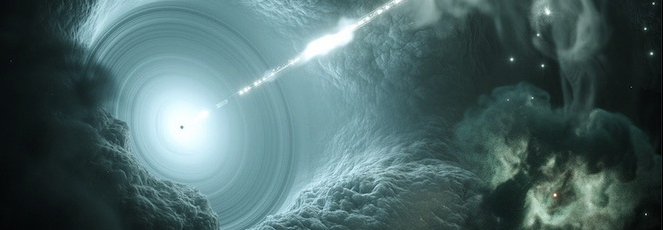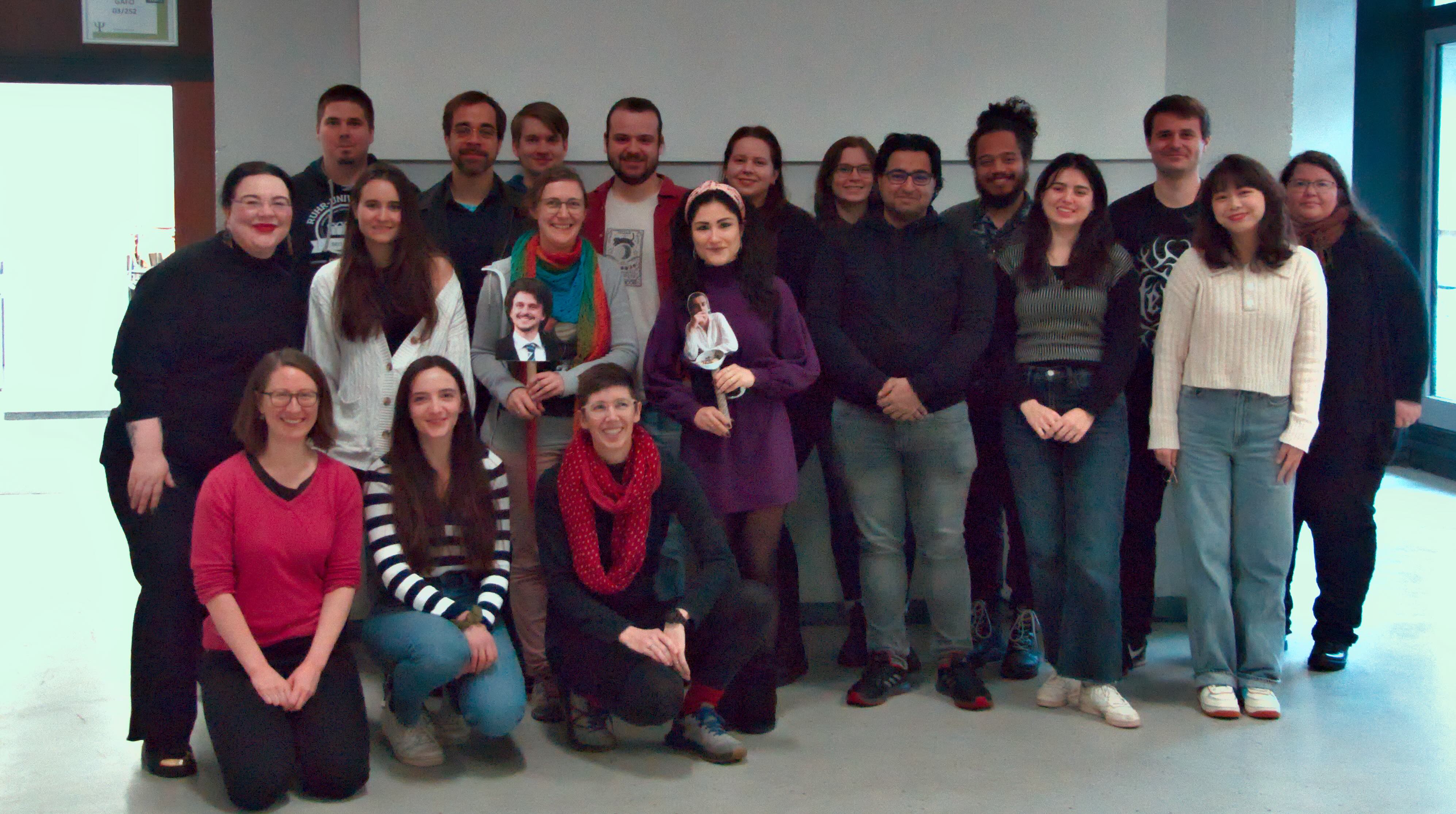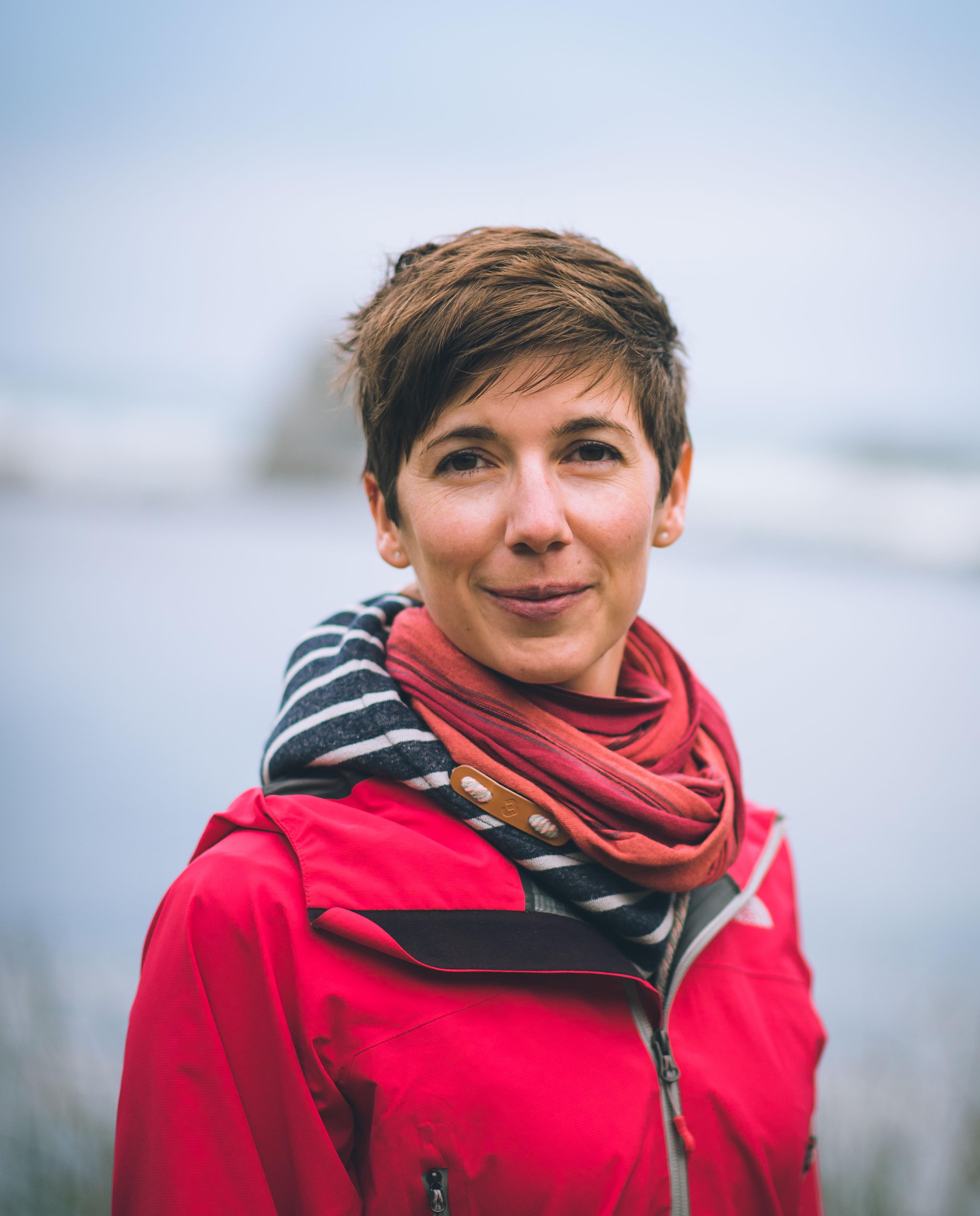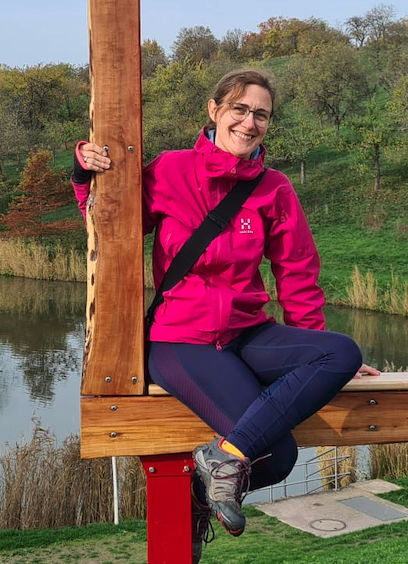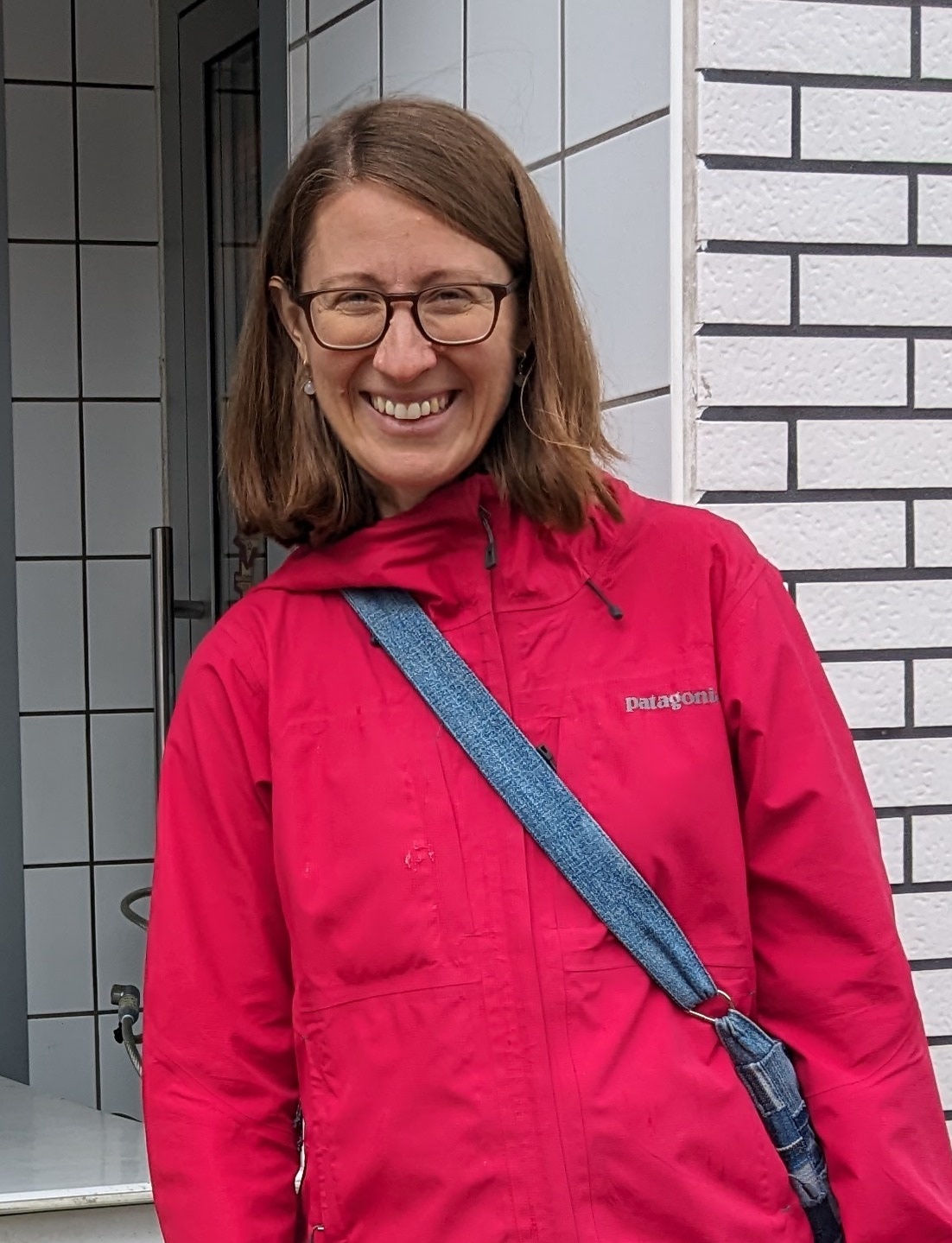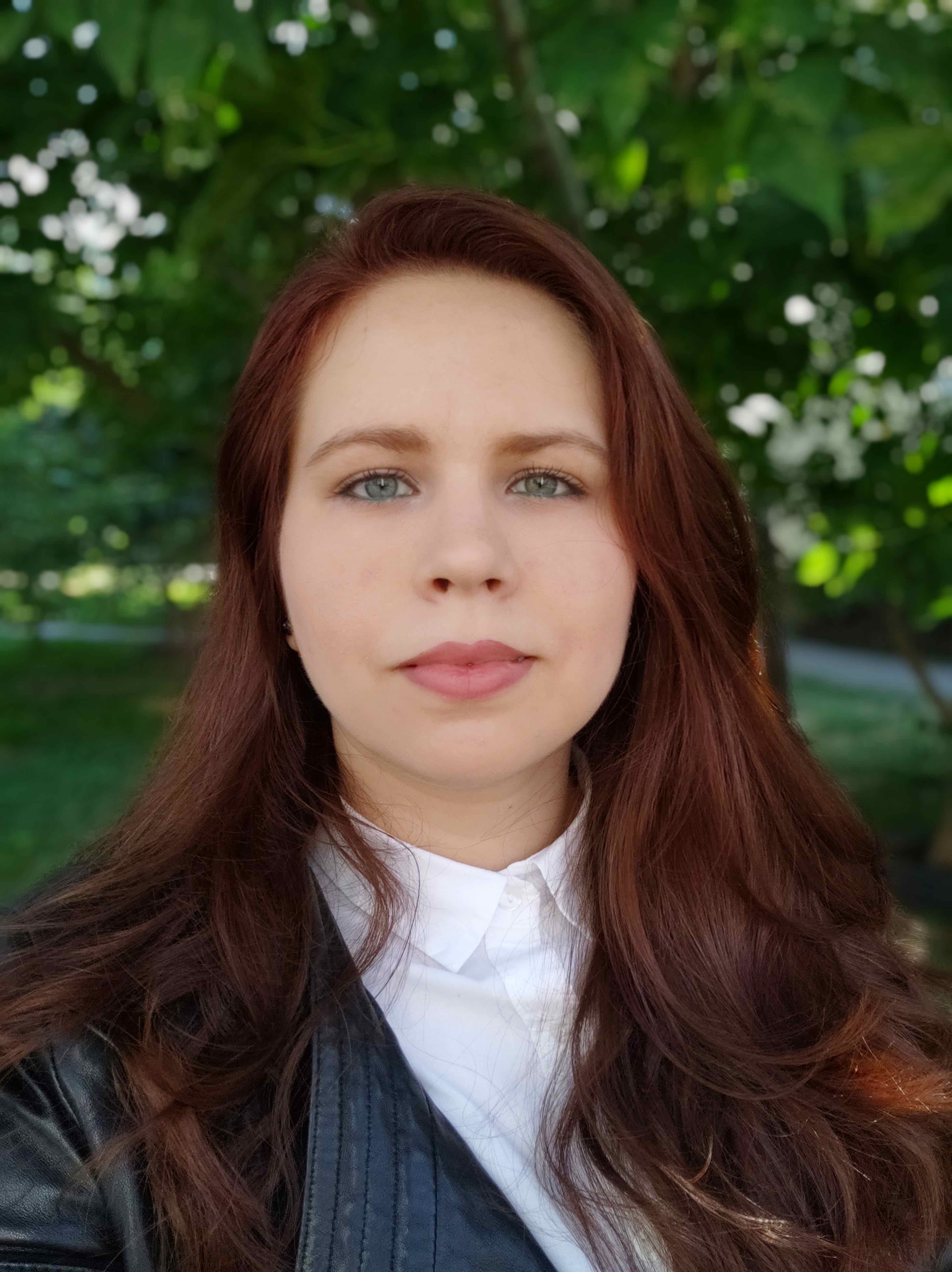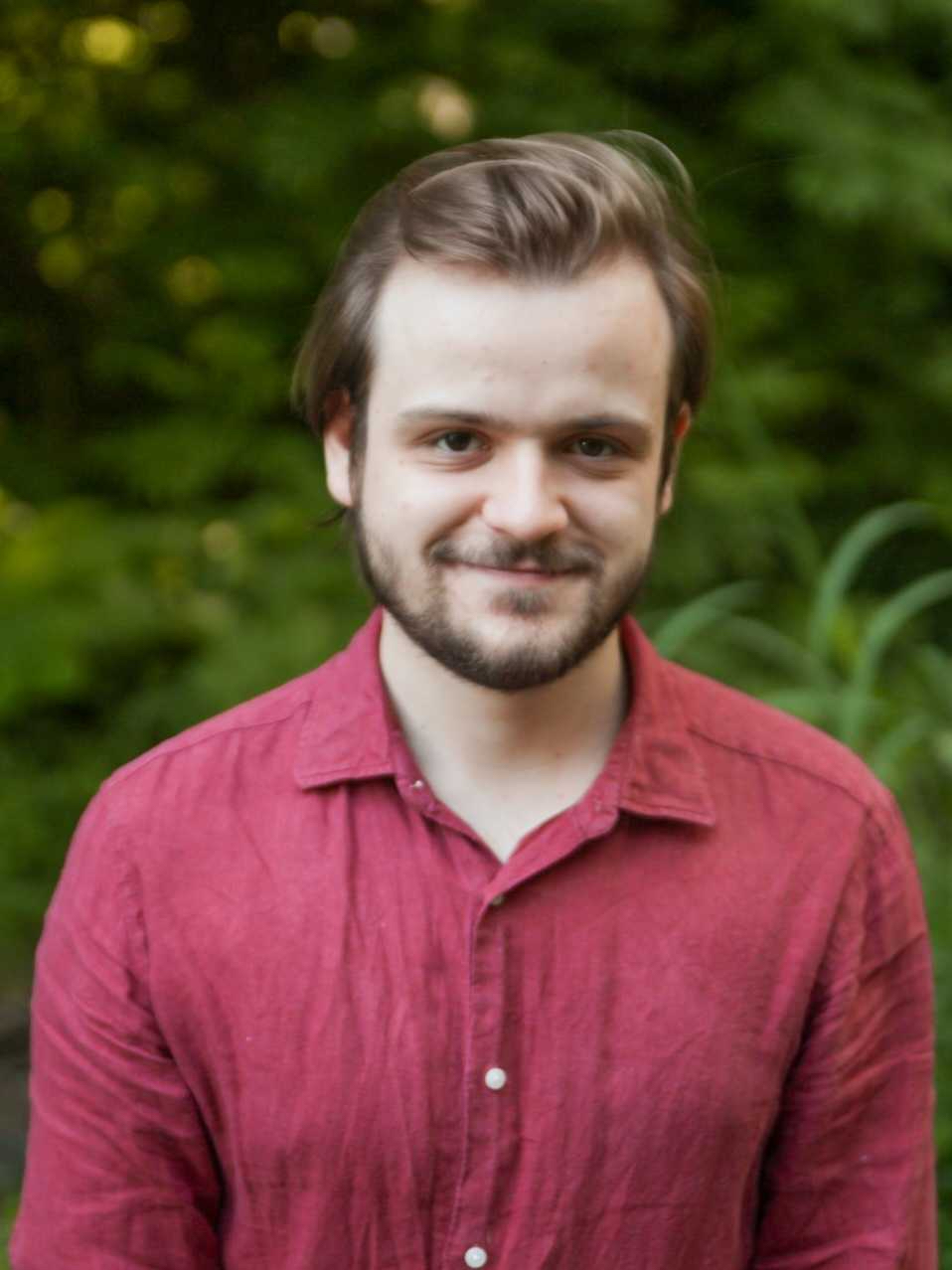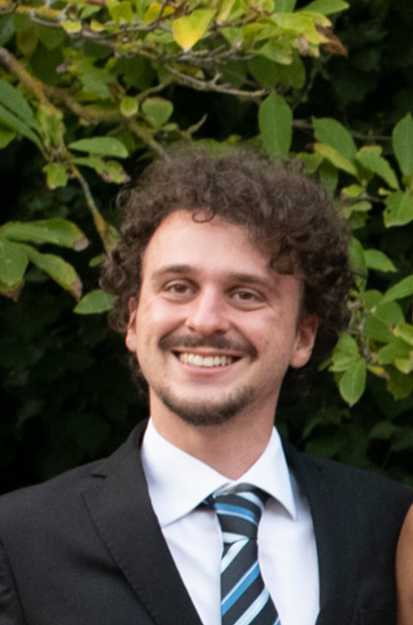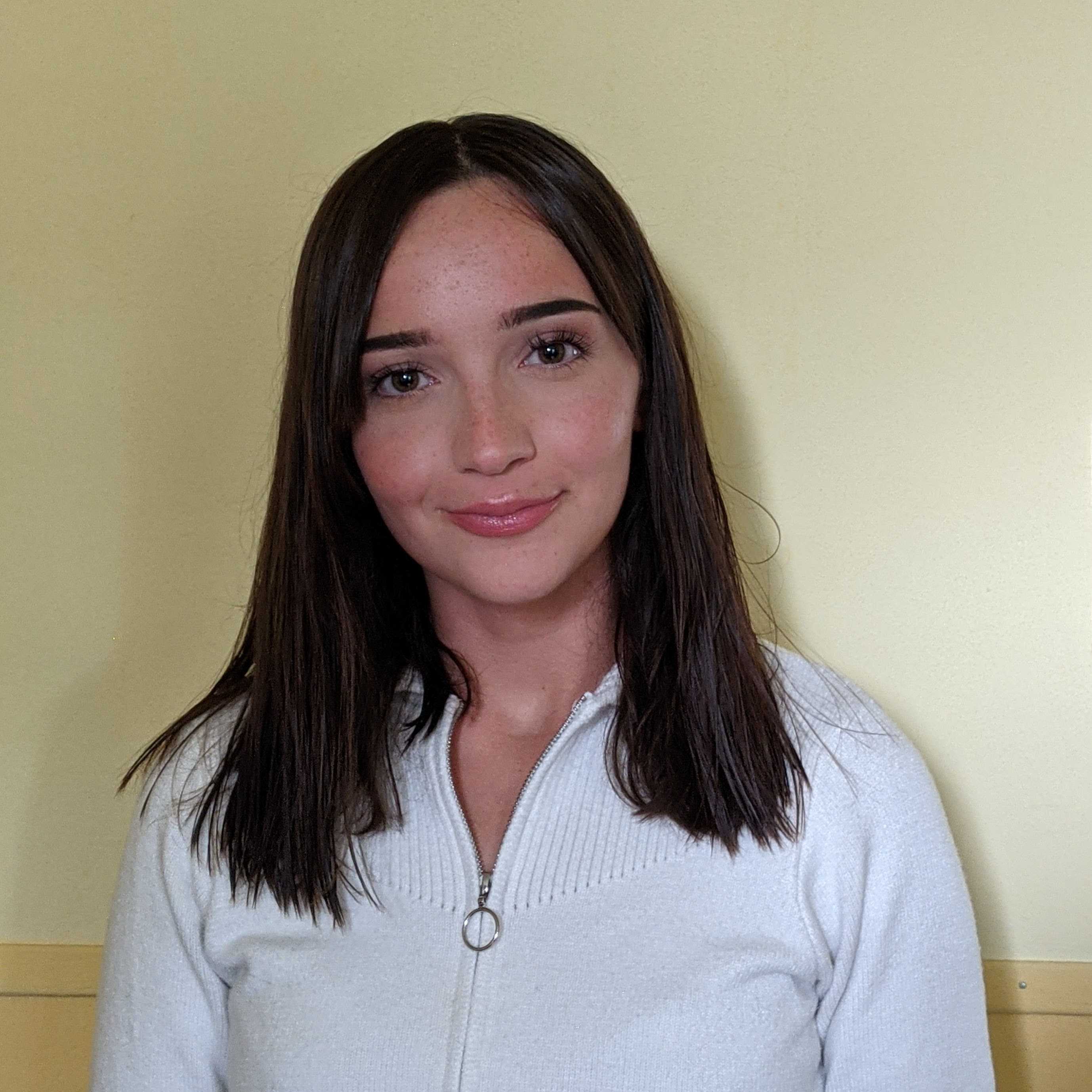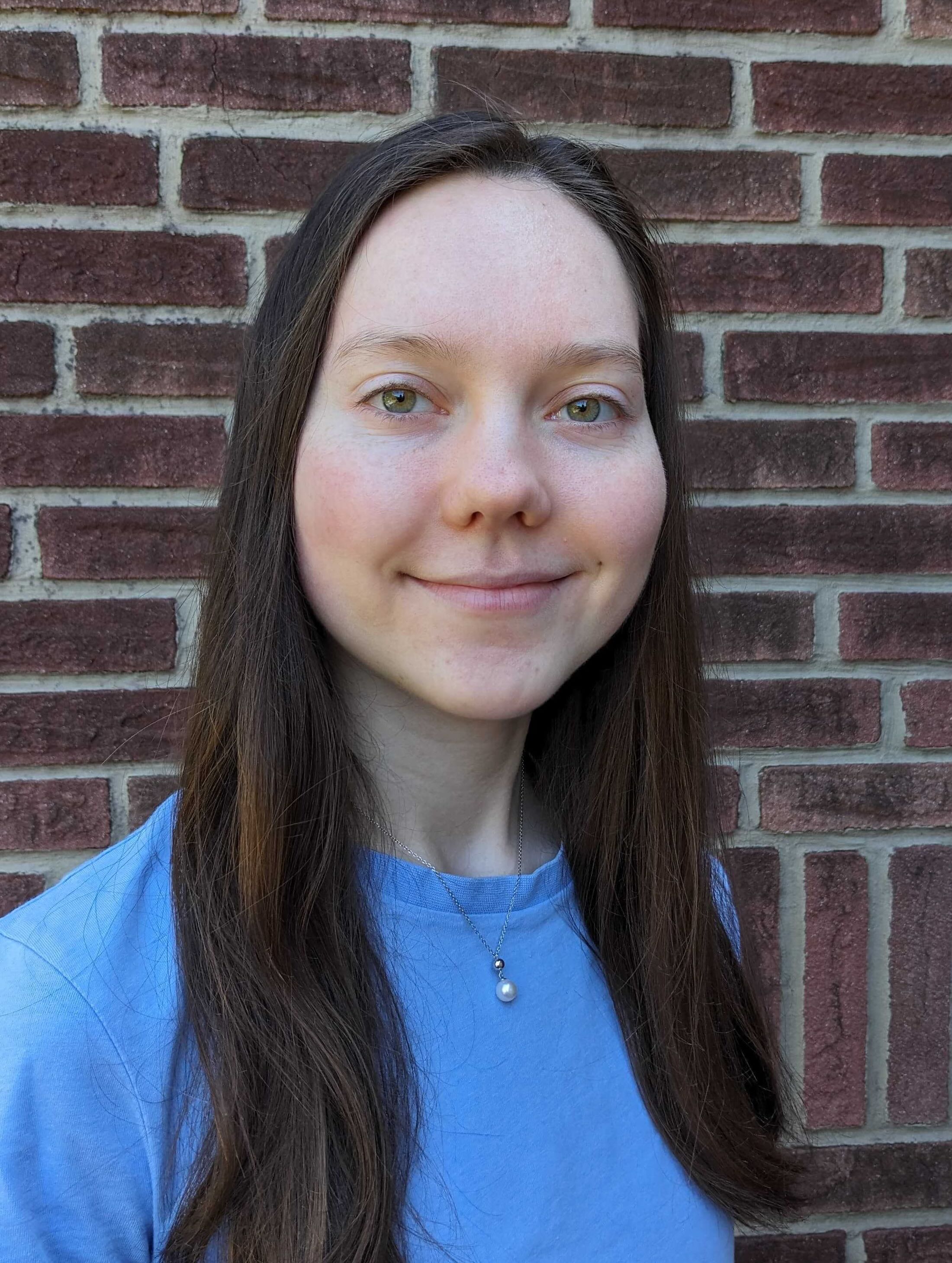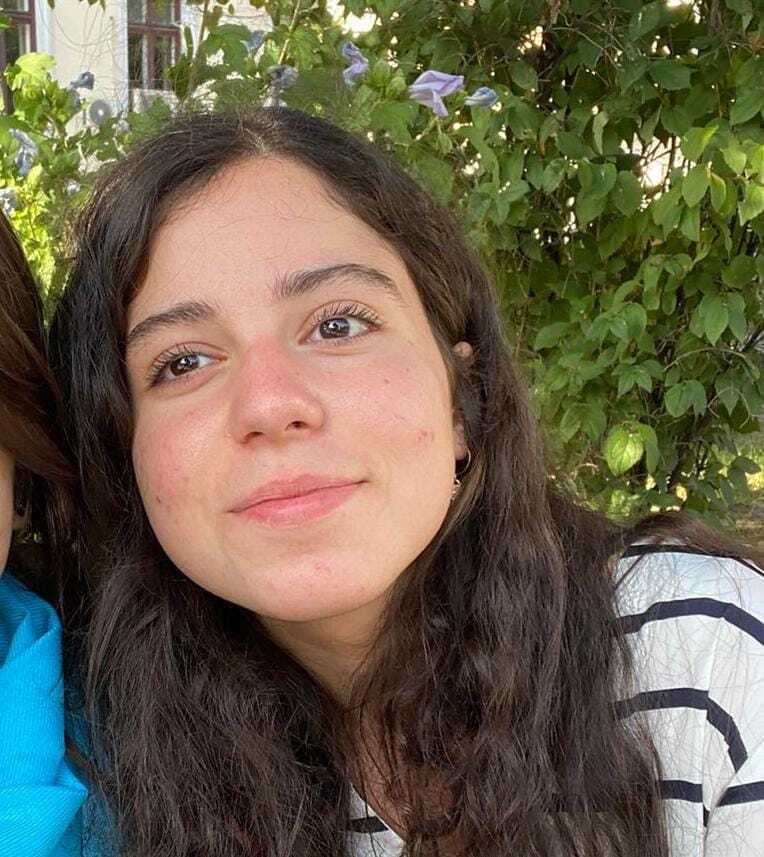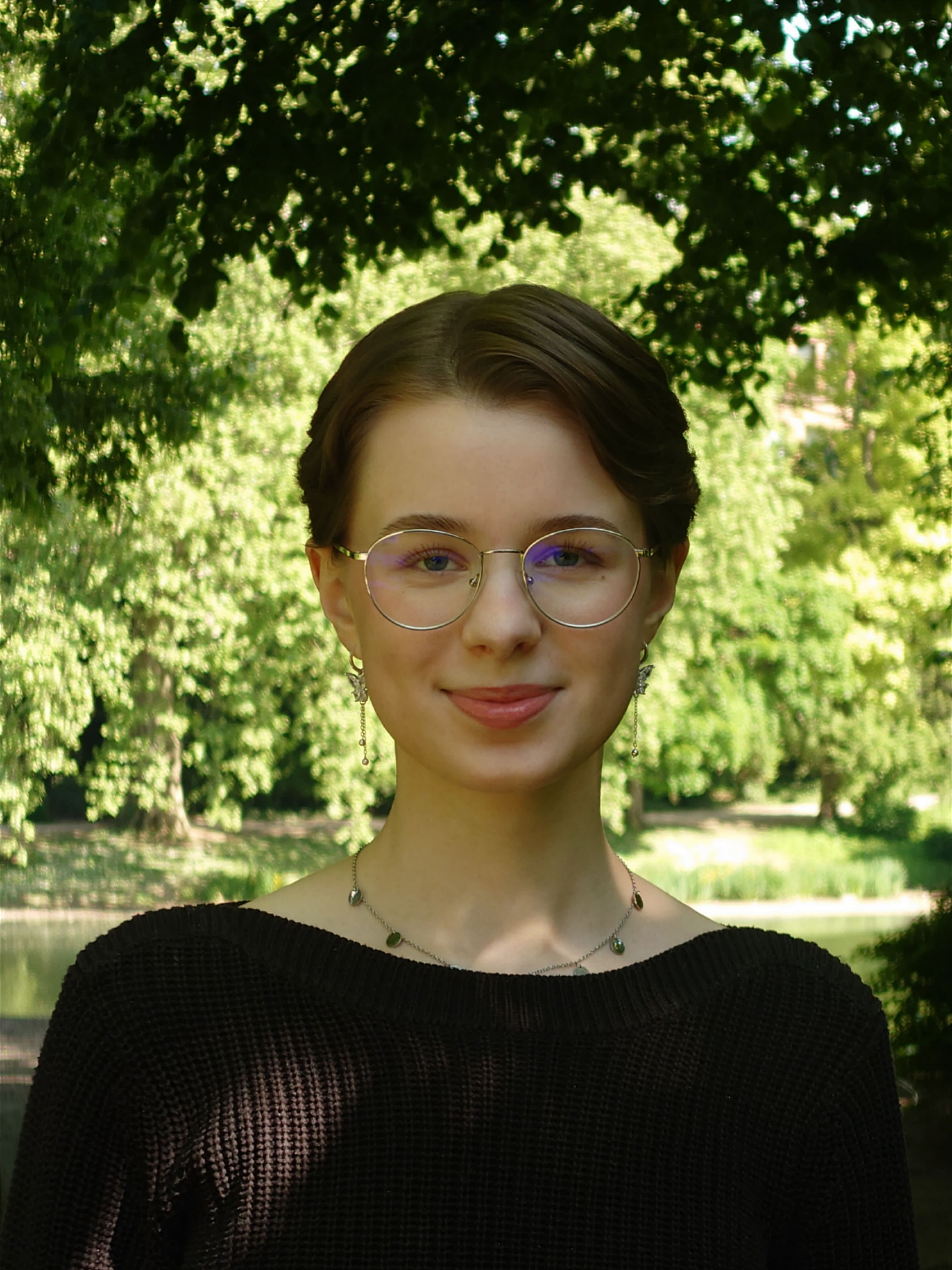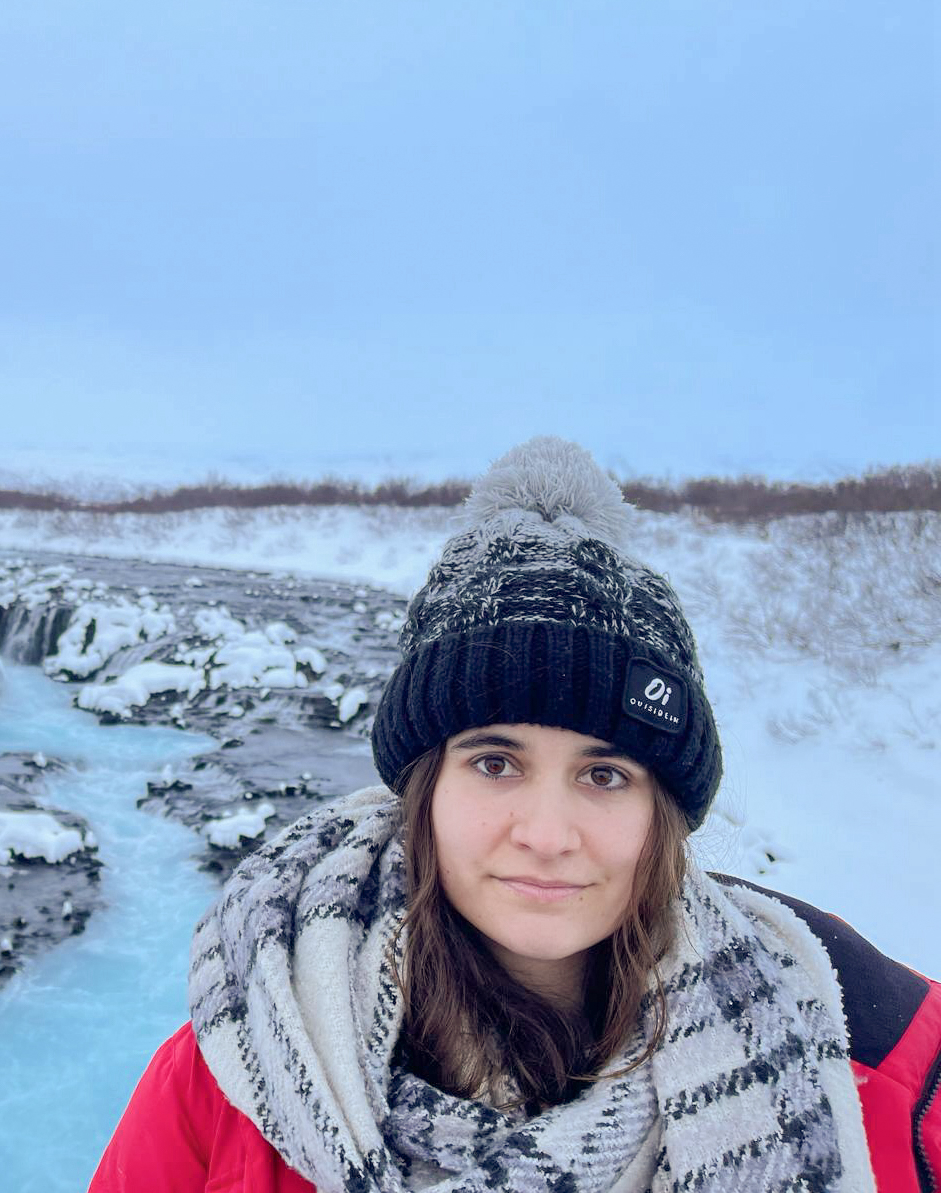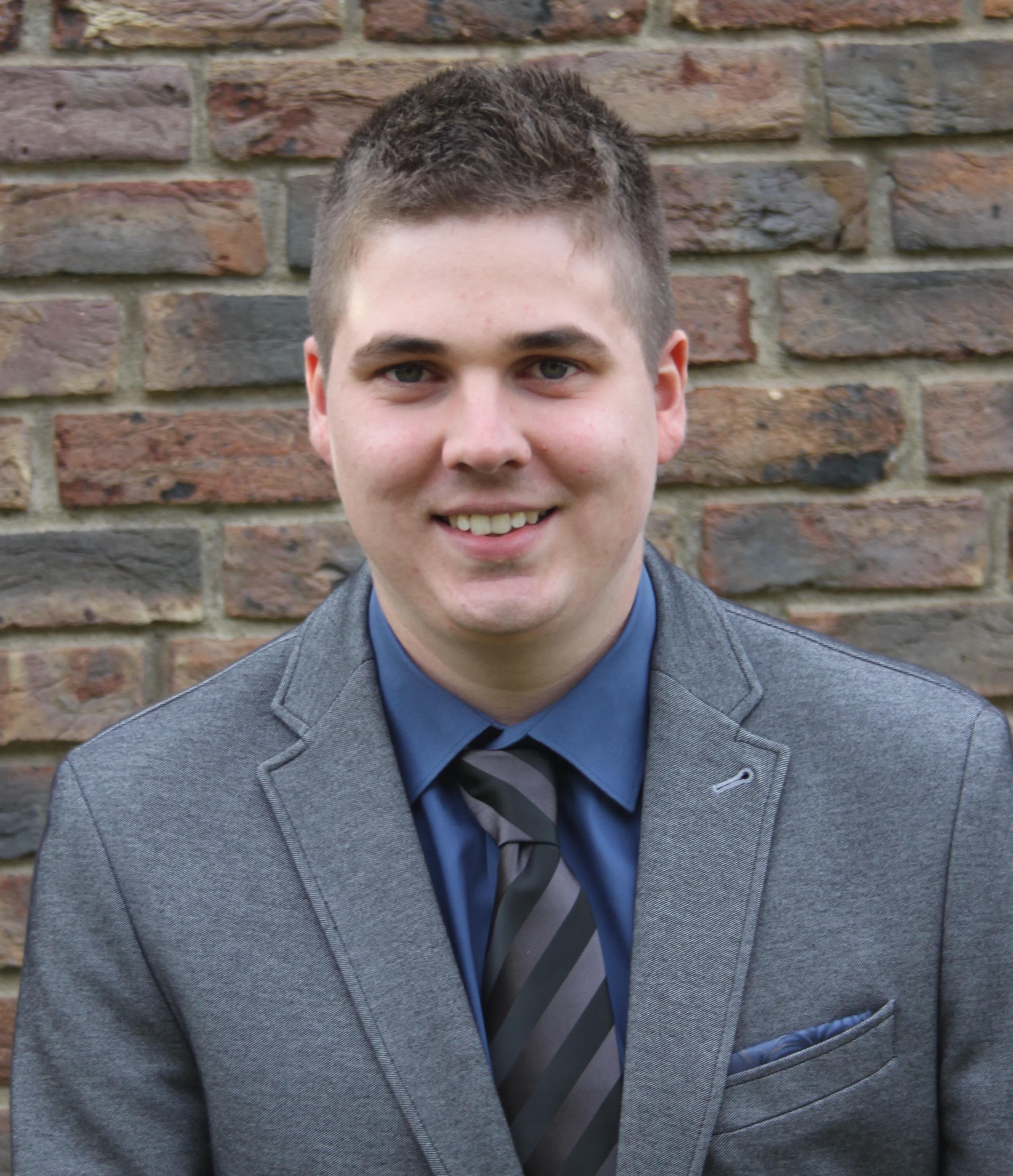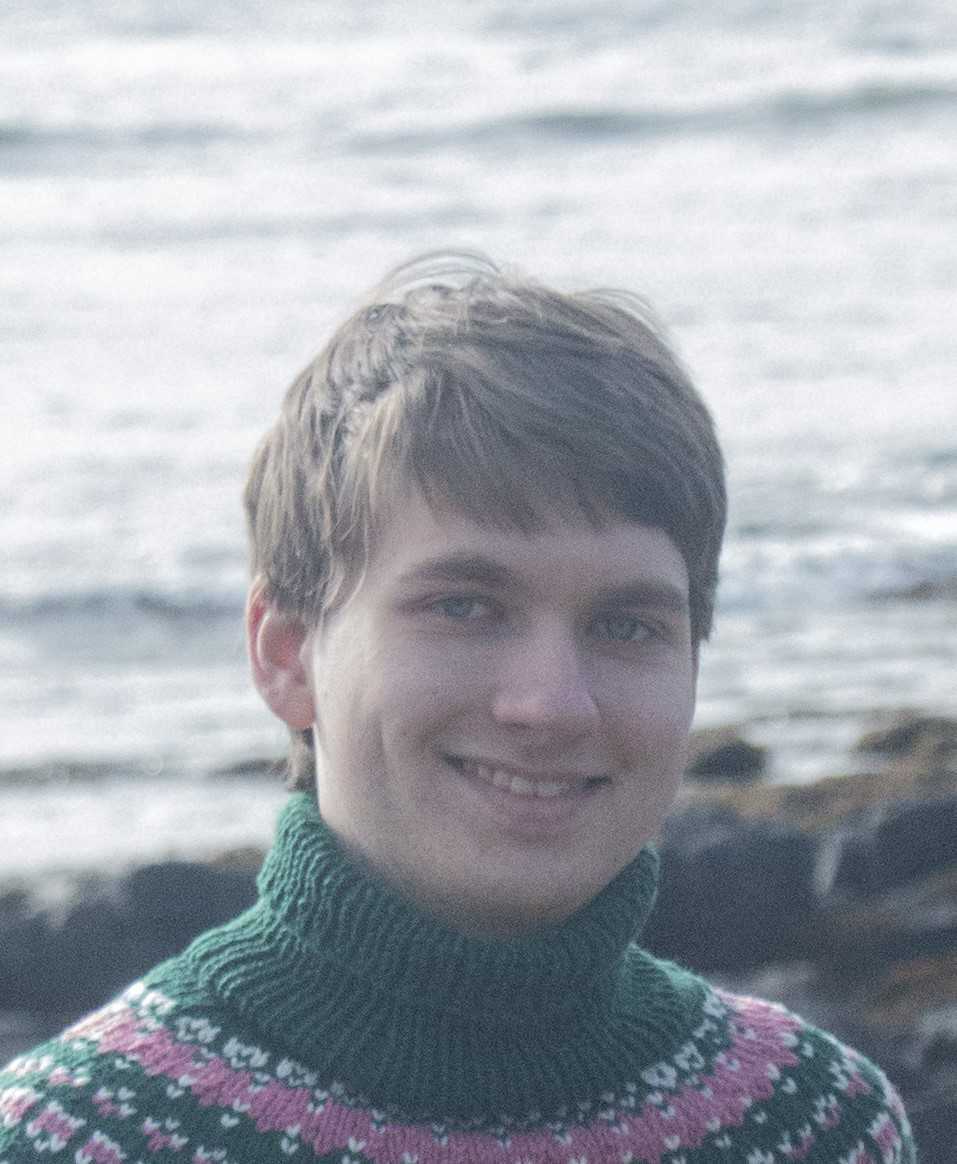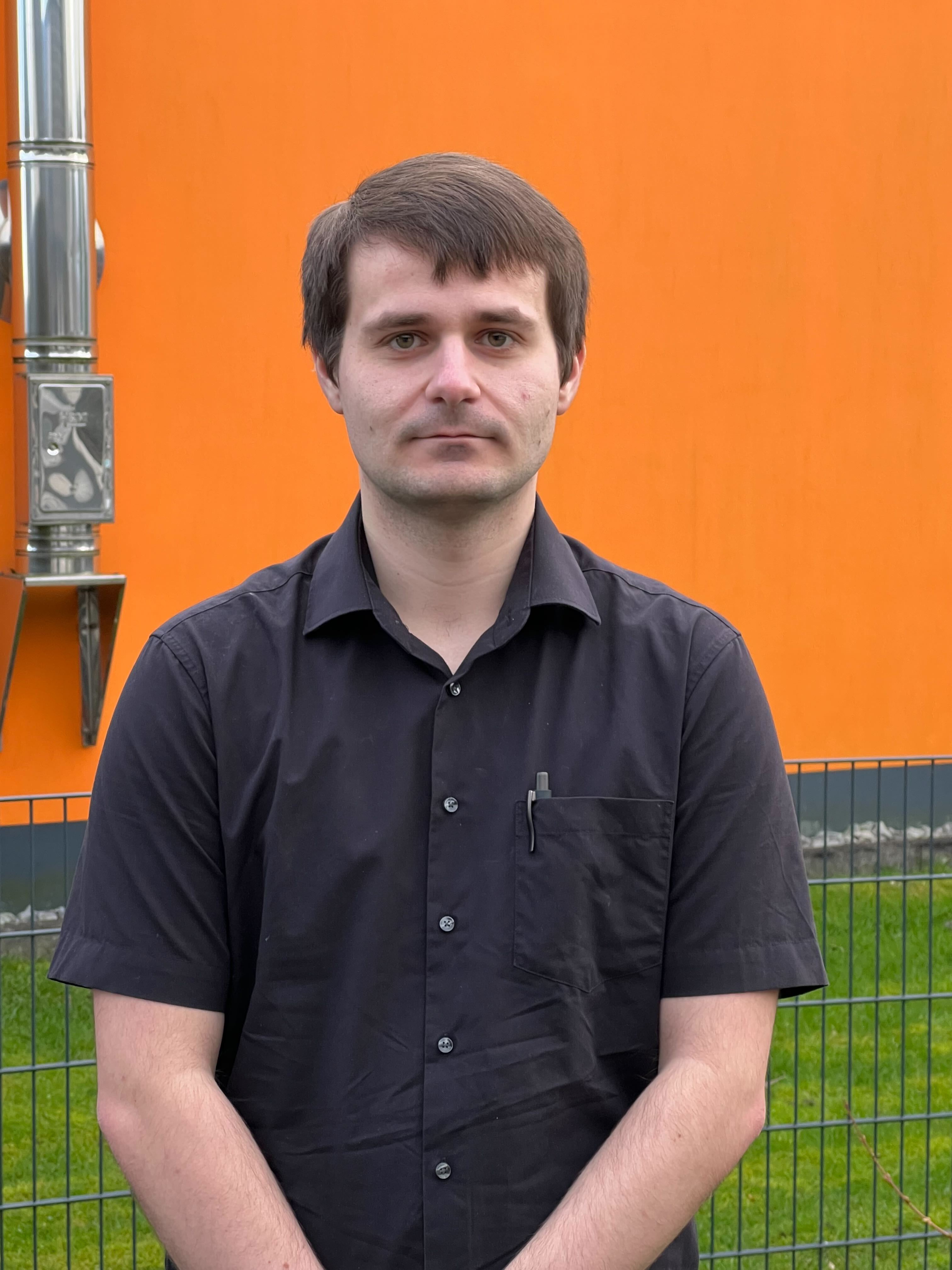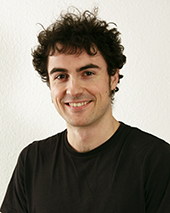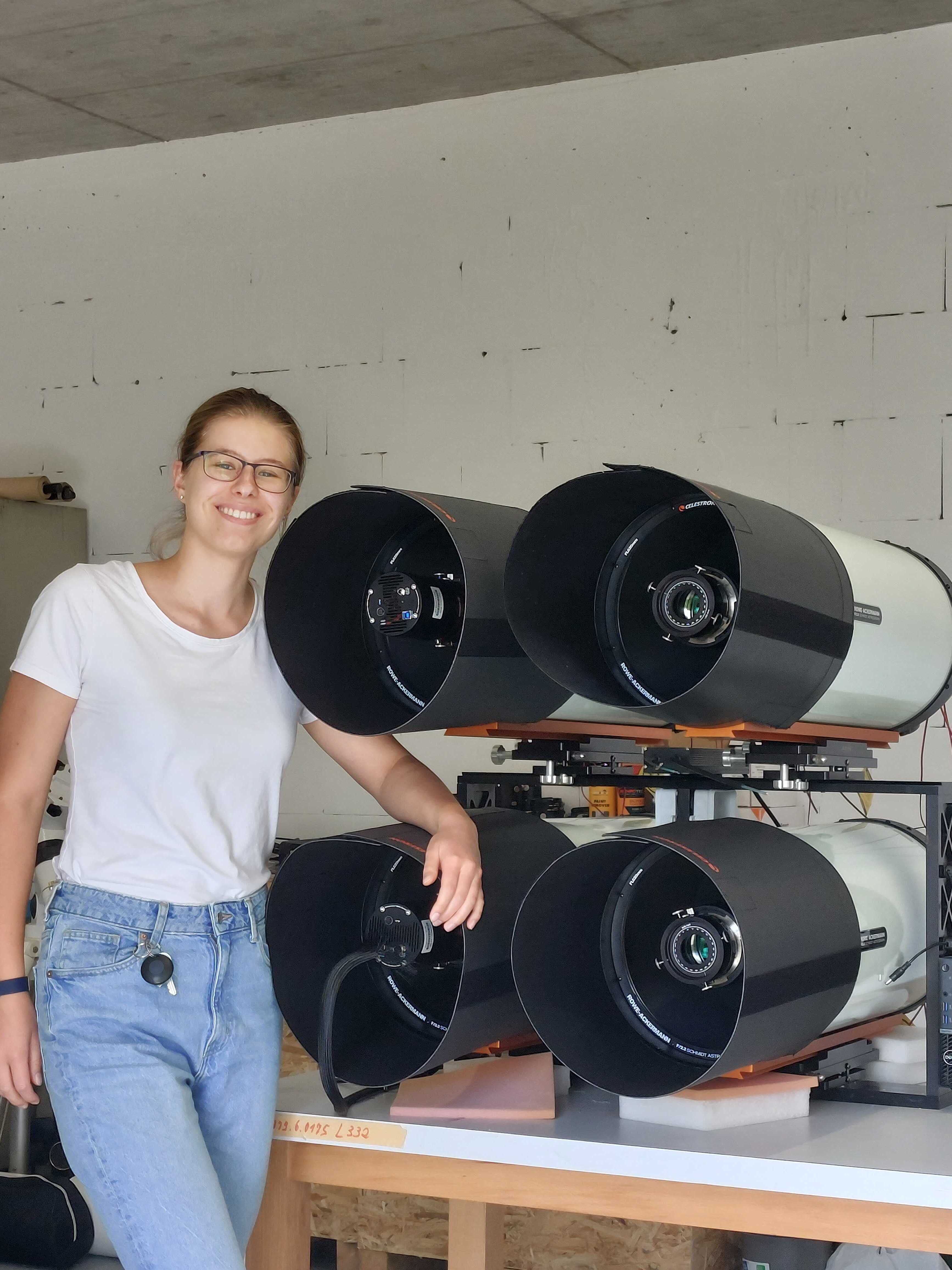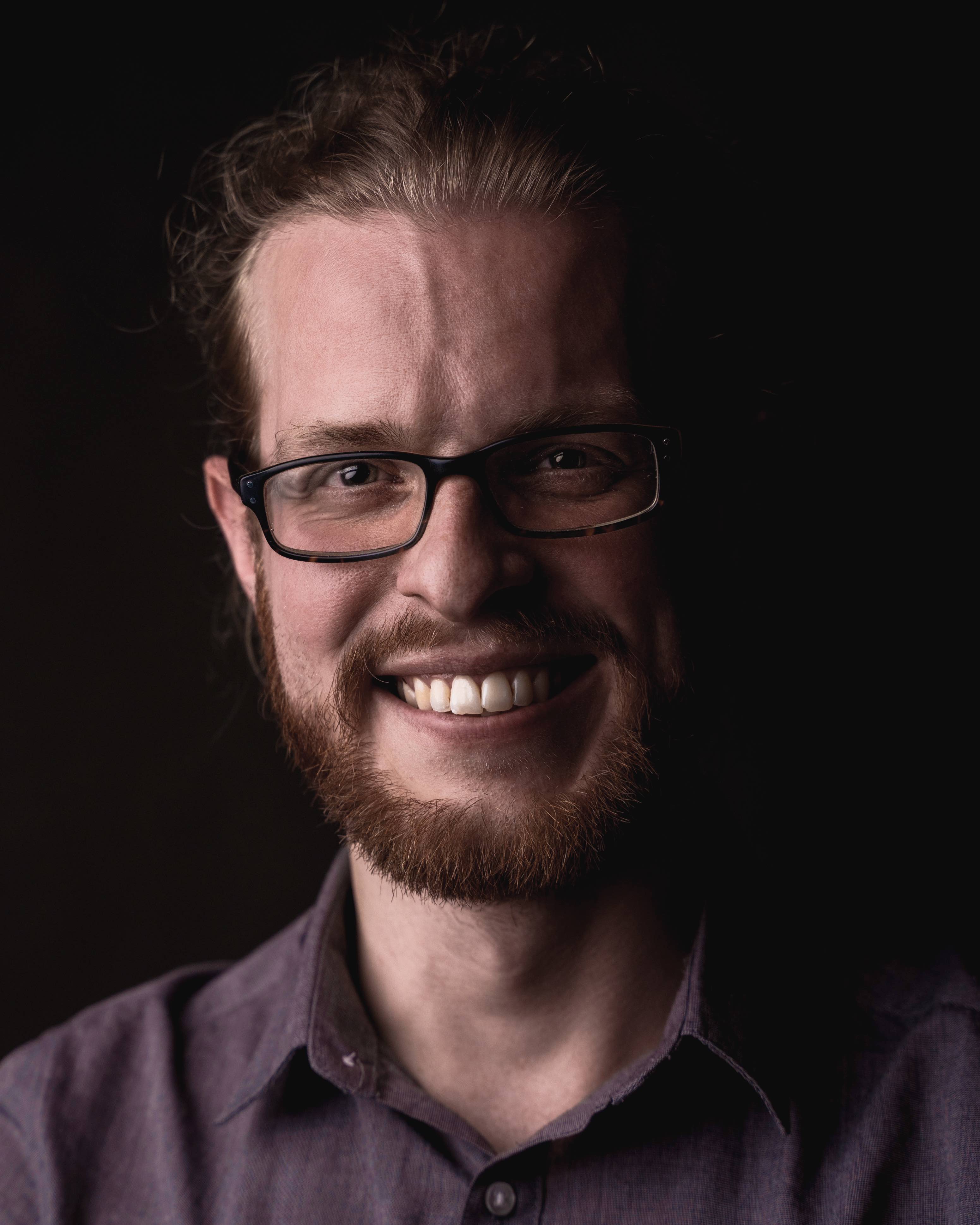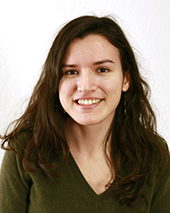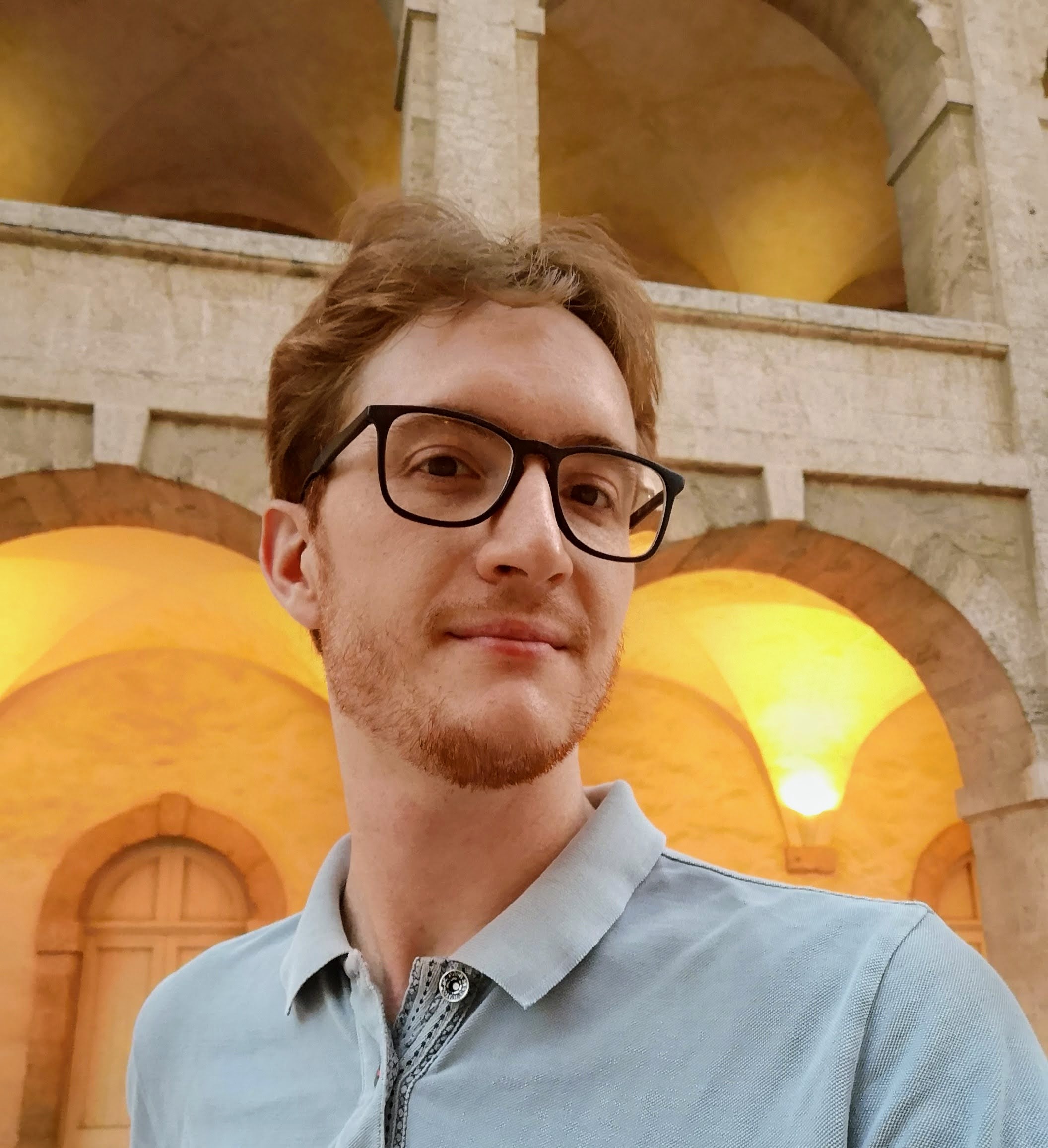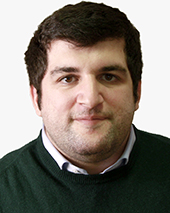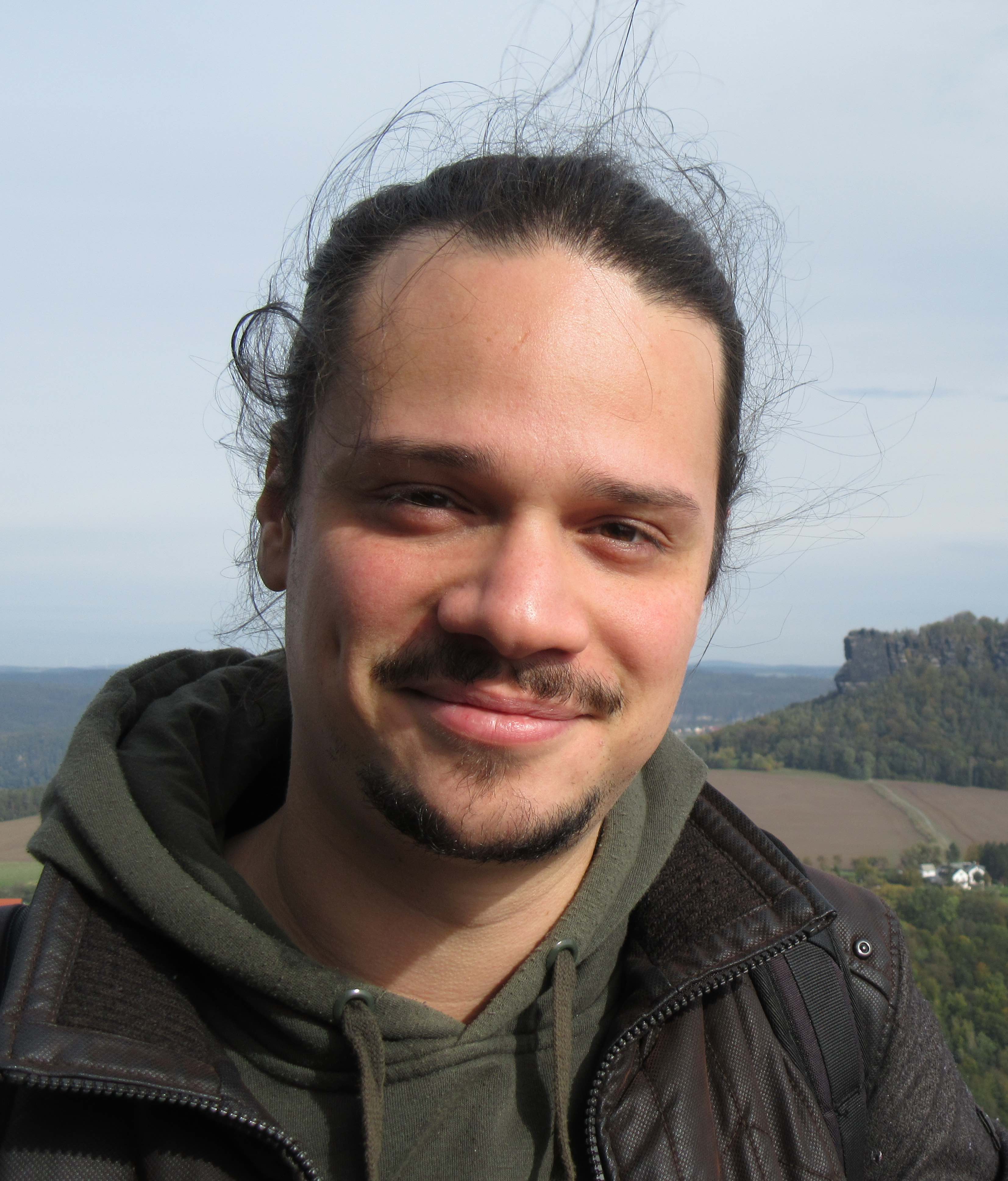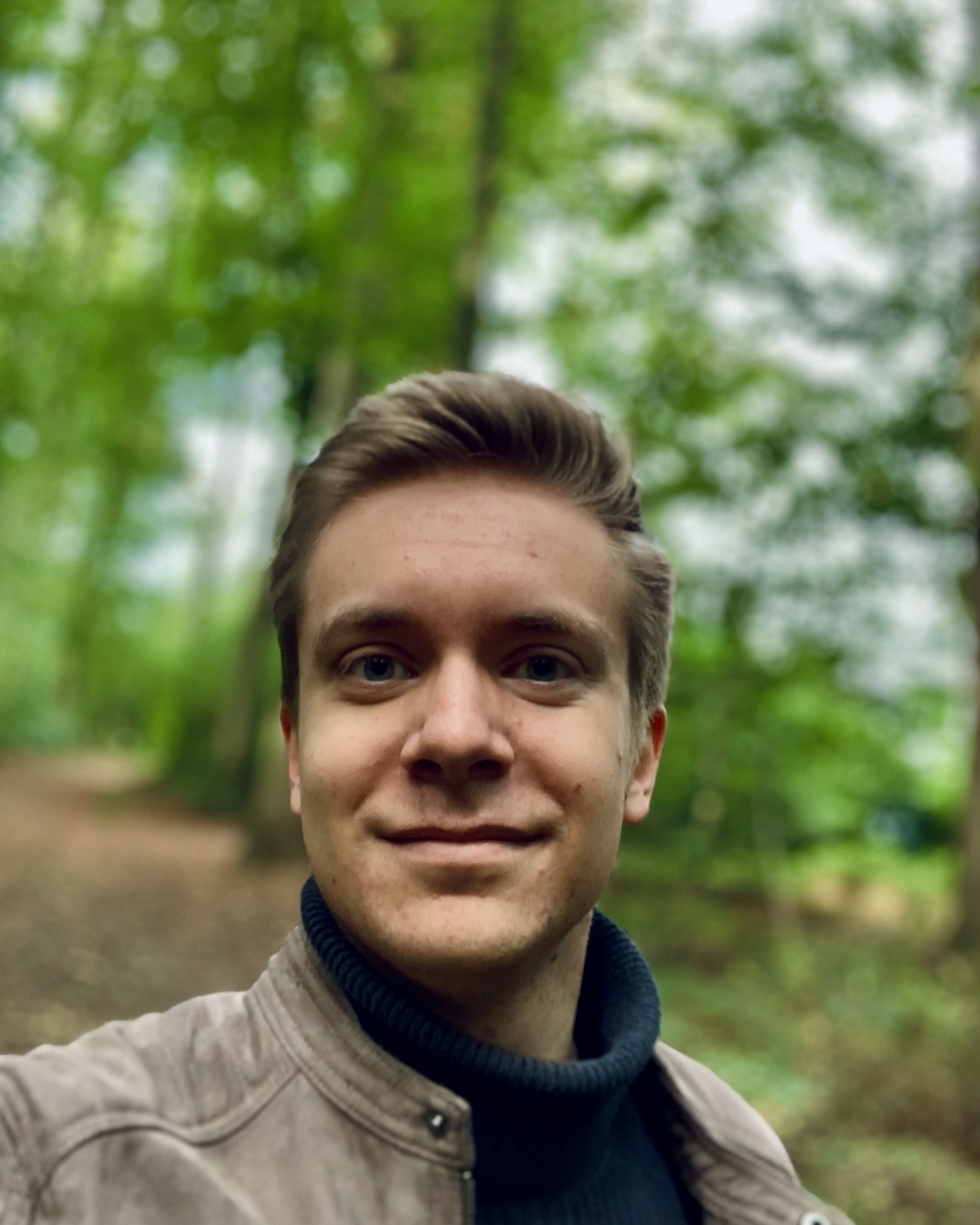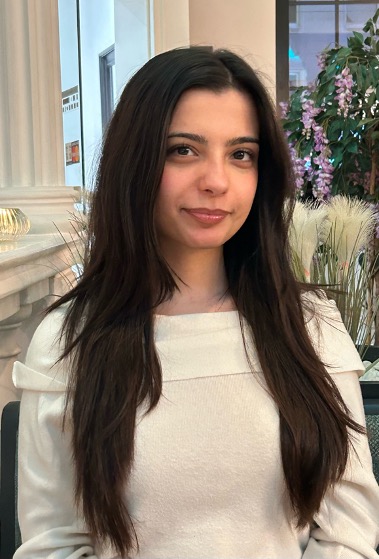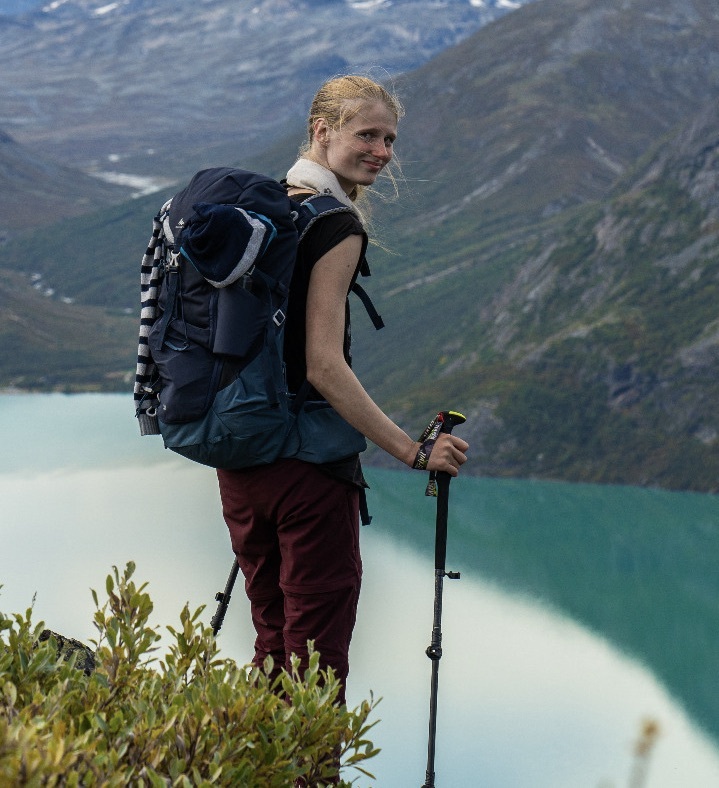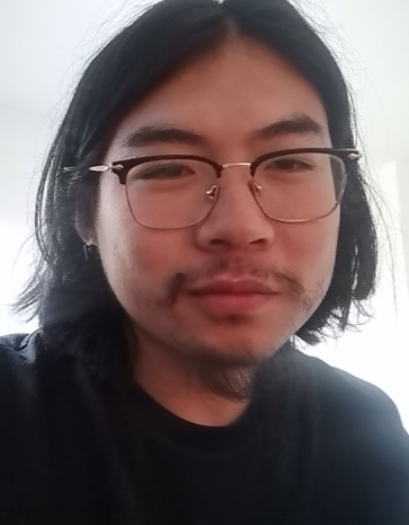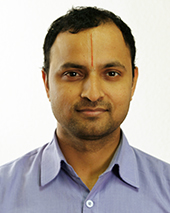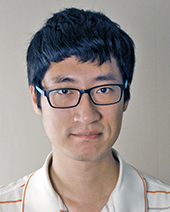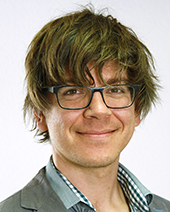The Team
Group picture taken in December 2024.
Prof. Anna Franckowiak (PI)
During my PhD within
the IceCube Collaboration I
worked on probing the connection of jets, Supernovae and Gamma-Ray
Bursts using TeV neutrinos. As a postdoc at the
SLAC National Linear Accelerator
Laboratory I studied the morphology and the spectrum of the Fermi bubbles
and searched for gamma-ray emission from Type IIn supernovae using Fermi-LAT
data as a member of the Fermi-LAT Collaboration.
From 2017-2022 I led a Helmholtz Young Investigator
Group at DESY Zeuthen and since October 2020 I'm a full professor for multi-wavelength
astronomy at the Ruhr-Universität Bochum (RUB). I served as the
IceCube analysis coordinator (2019-2021) and the multi-messenger co-coordinator of the Zwicky
Transient Facility (2019-2022). I coordinated the Fermi-LAT diffuse working group
in 2015-2016.
I'm a member of the of the IceCube, Fermi-LAT, CTA, ASAS-SN, ZTF and Large Array
Survey Telescope (LAST) collaborations.
Vera Nowak (Team Assistance)
Vera is the most important member of the group. She helps us to survive the bureaucracy djungle.
Dr. Elisa Pueschel (Staff Scientist)
My research focuses on very-high-energy gamma-ray astronomy, particularly gamma-ray
cosmology, blazar science, and the search for astrophysical dark matter. On the technical
side, I am interested in developing analysis methods for gamma ray astronomy. I come from
a particle physics background: my PhD was on the CDF experiment at the Tevatron,
and my first postdoc on the ATLAS experiment at CERN. In 2013, I moved to gamma-ray
astronomy via an Irish Research Council Fellowship and then a Marie Curie Fellowship at
University Dublin. From 2017-2022 I led a Helmholtz Young Investigator group at DESY
Zeuthen, and stayed on as a staff scientist. Since August 2023 I am a staff scientist
in the Multimessenger Group at RUB.
I am the PI of the ERC consolidator group Dark100, see https://epuesche.github.io/
Nikolas Korzoun
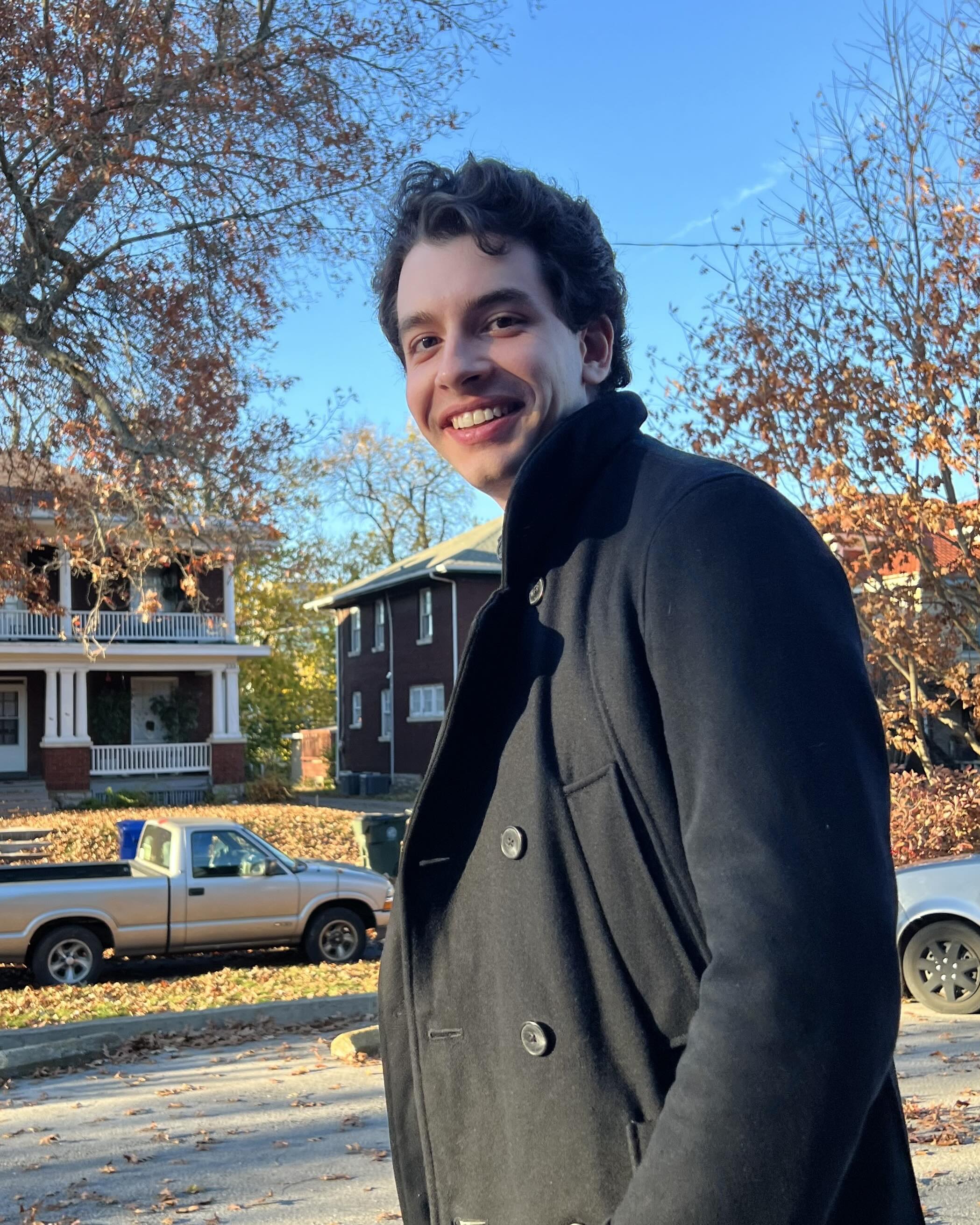
In 2020, I graduated with a Bachelor’s in physics from Connecticut College, where I helped to conduct
optical monitoring of blazars. I am currently finishing my PhD at the University of Delaware, where I
am an active member of both the VERITAS and PANOSETI collaborations. VERITAS studies the extreme universe
at very-high-energy (VHE; E>100 GeV), and PANOSETI at ultra-high-energy (UHE; E>100 TeV). During my PhD,
I prototyped the first gamma-ray analysis pipeline for PANOSETI, and organized two observing campaigns on
the Crab Nebula at Lick Observatory in 2024. Using this pipeline, I analyzed the first gamma-ray data
taken with these telescopes.
In November 2025, I transitioned to my first postdoc, joining the Multimessenger group at RUB. Here, I am
continuing the development of the analysis tools for Dark100, and helping to prepare the deployment of additional
PANOSETI telescopes at Palomar Observatory.
Using my experience and expertise with PANOSETI, I am also contributing to the development of the
gamma-ray science case and software pipeline for the LAST optical polarization survey.
Dr. Yuriy Popovych
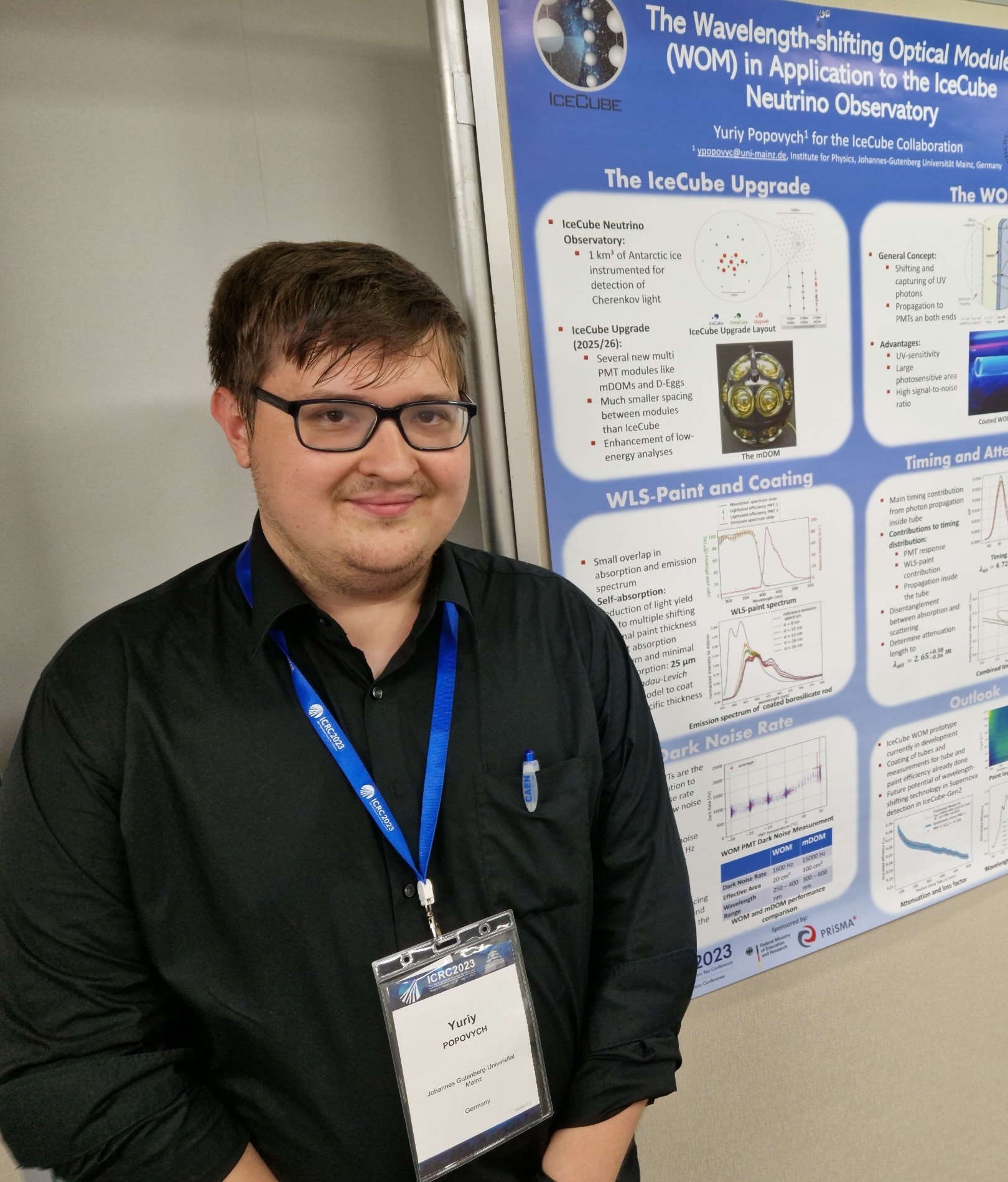
I completed my Bachelor's and Master's degrees at RWTH Aachen University, focusing on
experimental astroparticle physics. There, I worked on hardware development and testing
for the IceAct telescopes, a compact, cost-effective design of Imaging Air-Cherenkov
telescopes installed on top of the IceCube Neutrino Observatory to enable cross-calibration
and, ultimately, the veto of atmospheric neutrinos.
Continuing my work within the IceCube Collaboration, I moved to the University of Mainz
for my PhD, where I developed the Wavelength-Shifting Optical Module, a novel UV-sensitive
photosensor designed for deployment in the IceCube Upgrade. I was involved in the entire
development process, from conceptual planning and prototyping to production and acceptance
testing, ultimately completing and shipping the modules successfully.
Since May 2025, I have been working in the MM group at RUB on hardware development for the
Dark100 project, which aims to search for dark matter by detecting high-energy gamma rays
with an array of Fresnel telescopes. I am excited to contribute to these versatile
instruments and to explore their potential in gamma-ray physics and beyond.
Dr. Sruthi Ravikularaman
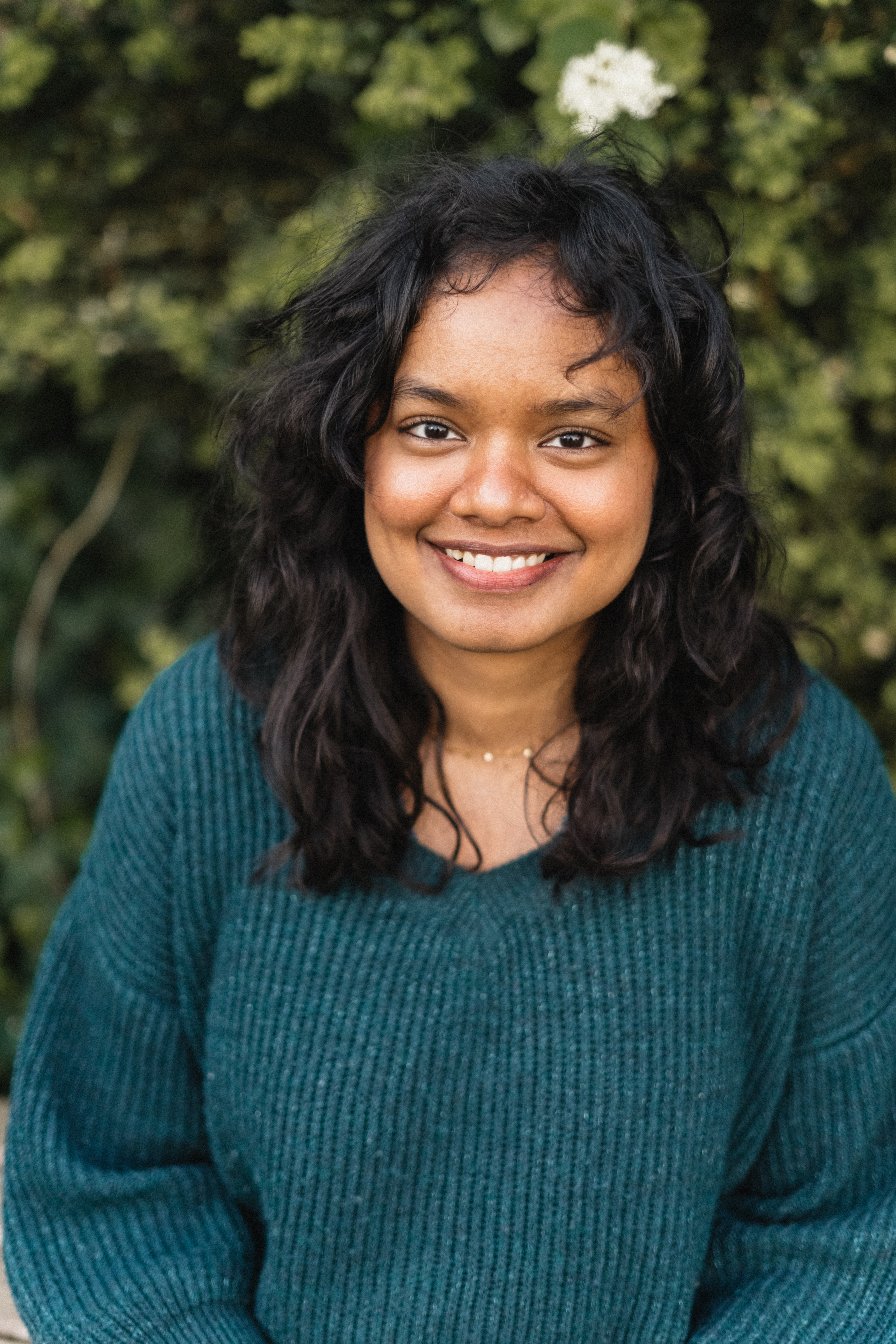
After completing a Bachelor’s and Master’s degree in fundamental physics at Université Paris-Saclay,
I began my PhD in 2021 at APC, Paris. During my PhD, I investigated the high ionisation rates in the
centre of the Milky Way. My research challenged the current cosmic-ray ionisation model and suggested that
photoionisation or more exotic phenomena, such as dark matter ionisation, should play a role in the Galactic centre.
I also spent a few months at MPIK, Heidelberg, where I started to build a 3D gas distribution model of the Galactic
centre to improve our understanding of this complex region.
I joined the RUB MM group in April 2025, as a postdoc in the Dark100 project. I am now involved in the software development
for PANOSETI which is an array of Fresnel telescopes capturing Cherenkov light from high-energy gamma-ray showers while
searching for signs of extraterrestrial life. I look forward to analysing the data and identifying PeVatrons in the Galaxy.
I am particularly excited about what we might discover regarding ultra-heavy dark matter!
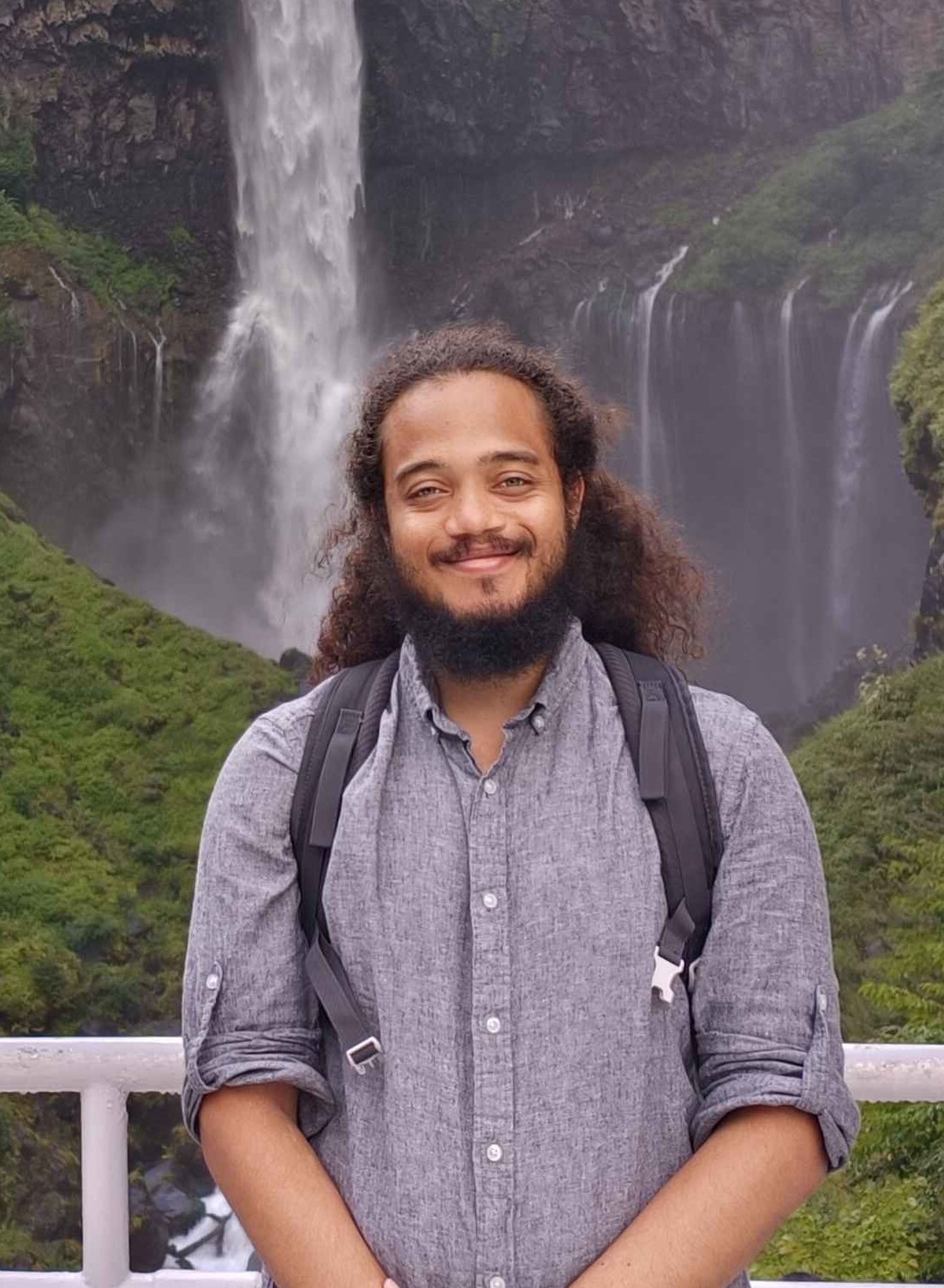
I am an astroparticle physicist with a strong background in theoretical computer science.
My research focuses on very-high-energy gamma-ray astronomy, with particular emphasis on gamma-ray cosmology,
which uses distant gamma-ray sources as probes to study the electromagnetic content and structure of the Universe.
During my PhD at IJCLab, near Paris, I led the development of STeVECat, the most comprehensive catalog
to date of very-high-energy gamma-ray spectra from extragalactic sources (publicly available
here.).
This catalog, combined with a new Bayesian analysis framework, allowed me to obtain the first model-independent
measurement of the extragalactic background light (EBL) from gamma-ray cosmology. From this measurement, I derived
constraints on the amount of diffuse sources in the Universe as well as a measurement of the local Hubble
constant independent of CMB and cosmic distance ladder measurements.
As a member of the Multimessenger group at RUB, I am involved in the preparation of the gamma-ray cosmology
measurements from the next generation of VHE observatories, the CTAO. I am a member of the CTAO Consortium
and the LST Collaboration.
Dr. Nora Valtonen-Mattila
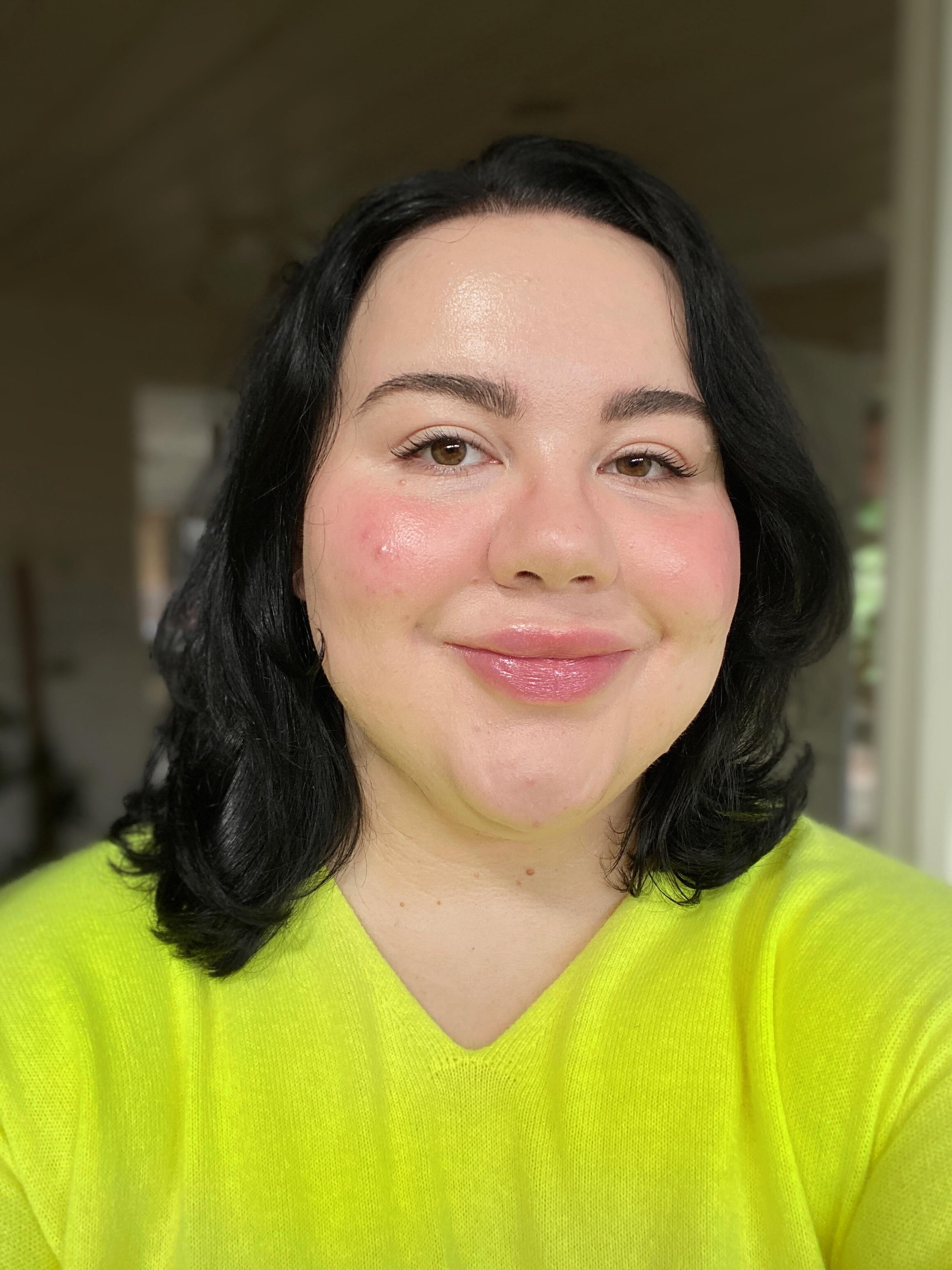
I began my physics education at The Open University in Milton Keynes, UK, earning a
BSc (Honours) in Physics with a concentration in theoretical physics and astrophysics,
focusing my thesis on quantum entanglement in diamonds. Afterward, I pursued a year
of postgraduate studies in medical physics and medical chemistry, investigating brain
imaging techniques and Alzheimer's treatment.
I received my MSc in Physics from Linnaeus University in Växjö, Sweden,
where I concentrated on astroparticle physics. My thesis focused on the
connection between neutrinos from the blazar TXS 0506+056 and gamma-ray
spectra observed by Fermi-LAT. Following this, I completed my Ph.D. in Physics at
Uppsala University, Sweden, where I worked with the IceCube Neutrino Telescope.
My Ph.D. research focused on multi-messenger astronomy, studying neutrinos across a
wide energy range (MeV to PeV) from extreme transient systems like supernovae,
neutron star mergers, and GRBs. I developed novel analysis streams for both online
and offline MeV neutrino detection, improving IceCube’s ability to
respond to supernovae and other astrophysical transient events.
I joined the RUB MM group as a postdoc in October 2024, where my research
focuses on exploring supranuclear density systems, such as neutron stars and
supernovae, where the nature of matter remains elusive. I am also continuing
to work on improving IceCube’s MeV neutrino response to astrophysical events
such as supernovae, which could occur galactically at any time. Such an event
would be a once-in-a-lifetime opportunity to probe deep into these extreme
systems, allowing us to expand our understanding of matter and the
nature of the universe.
Dr. Maria Kherlakian

I have received my bachelor's and master's in Physics from the University of São
Paulo (USP). In my master's thesis, I have investigated the sensitivity of the
Cherenkov Telescope Array Observatory (CTAO) to gamma rays originating from dark
matter annihilation in Milky Way substructures, which has led to a publication.
In 2020, I moved to Germany to start my PhD at the Humboldt University and DESY
Zeuthen as a member of the Helmholtz-Weizmann Research School on Multimessenger
Astronomy. During my PhD, I have played a key role in the implementation of a new
image cleaning technique for the VERITAS telescopes. Additionally, I led the search
for very high-energy emission from tidal disruption events (TDEs) and fast blue
optical transients (FBOTs) with VERITAS.
Since joining the Multimessenger group at RUB in June 2024, I have focused on very
high-energy transient science with the CTAO and on optimising simulations for the
observatory. In addition, I will continue leading follow-up observations of TDEs and
FBOTs with VERITAS.
Dr. Angela Zegarelli

I entered the Multi-Messenger (MM) group at the Bochum University in February 2024, as part of the IceCube Collaboration,
after a long scientific training in Rome at Sapienza University. There I got bachelor and master degrees as well as my PhD,
and I also spent a year as a Postdoctoral researcher.
My history with the neutrino telescopes' world has started from the beginning of my scientific career. I spent my PhD and
postdoc in Rome working for both the ANTARES and KM3NeT Collaborations. Throughout this time, I contributed to the software
development of the KM3NeT-ARCA online system and to follow-up analyses of multi-messenger alerts. Moreover, I also extensively
investigated phenomenological models of neutrino emissions from Gamma-Ray Bursts (GRBs) in both low- and high-energy
domains, and performed high-level statistical data analyses to search for temporal and spatial correlations between
GRBs and ANTARES neutrino events.
I am enthusiastic now to have joined the MM group here in Bochum; I feel well-motivated to expand my knowledge and to continue exploiting the potential of multi-messenger observations.
Anastasiia Omeliukh (PhD student with DAAD scholarship)
Anastasiia got her master's degree at University of Kiev. She worked on simulations
for IceCube-Gen2 and spend an extended period at DESY Zeuthen working with Markus Ackermann.
In October 2021 she started her PhD at RUB where she works on multi-messenger
modeling of blazars.
Paul-Simon Blomenkamp (PhD student)
I did my master's degree at TU Dortmund as part of the E5b physics working group. There I worked on
the automatic detection of radio astronomical sources using methods of machine learning.
In March 2022, I started my PhD at Anna Franckowiak's working group in Bochum. Here I study the
diffuse gamma-ray emissions in the Milky Way galaxy, by comparing state-of-the-art models
to Fermi-LAT data.
Giacomo Sommani (PhD student)
Giacomo spend 8 months at RUB as an ERASMUS intern to work on his master thesis. Now he's a PhD student at RUB.
He studies the angular uncertainty of IceCube alert
event with a focus on the influence of systematic uncertainties introduced by a limited
understanding of the ice properties.
Patrik Milan Veres (PhD student)
Patrik started his PhD at RUB in October 2022. He did his master thesis in Budapest where he studied EVN radio imaging and HST optical data
of a dual AGN candidate. He now works on gamma-ray and radio
emission of tidal disruption events.
Frederike Apel (PhD student)
Frederike did her Bachelor and Master thesis in the group
(graduation 2021 and 2024). For the Bachelor thesis she
modeled
the low-frequency emission from
the blazar PKS 1502+106. In her master thesis she investigated
the multi-dimensional parameter
space of lepto-hadronic models for the blazar PKS 0735+178. For her
PhD she will model the optical polarization signal of blazars.
Nadine Altenhoff (Master student)
I completed my Bachelor’s degree in 2023 at RUB in the Galaxy Evolution Group, where
I used simulated galaxies to study how inclination and dust affect the observed light
profiles of spiral galaxies. Now, I’m a Master’s student in the MM group working on
identifying potential AGN counterparts to high-energy neutrino alerts using ZTF data.
My work involves analyzing AGN variability within IceCube alert regions using AMPEL and
external catalogs, aiming to find AGNs as possible sources of astrophysical neutrinos.
Amanda Mischo (Bachelor student)
I am currently working on my Bachelor's thesis at the RUB. I have been interested in astronomy ever since I was
a kid, supported by a huge encyclopaedia on stars that my mother gifted me around 2011.
Now, I am writing my thesis on modelling radiation processes in AGNs with relativistic jets.
Maria-Irina Mociu (Bachelor student with DAAD scholarship)
I started my bachelor's degree at the RUB in October 2022, choosing astrophysics and particle physics as my
introductory courses. In March 2025 I joined the MM group, where I am writing my thesis in neutrino astronomy.
My goal is identifying clusters of neutrinos detected by IceCube and analyzing the distribution of IceCube events
across the sky. I am excited to conduct my first work on real data and I expect to graduate in fall 2025.
Franka Krapiau (Bachelor student)
I joined the multi-messenger group in March 2025 for my Bachelor's thesis,
where I am searching for spatial and temporal correlations between IceCat-2
neutrino events detected by IceCube and gamma-ray sources from the Fermi
catalogs.
Past Team Members
Dr. Victor Barbosa Martins

I completed my bachelor's in Physics Engineering at the University of São Carlos (UFSCar)
in Brazil and then earned my master’s in Astrophysics at the University of São Paulo
(USP) in 2018. That same year, I moved to Germany to start my PhD at Humboldt
University (HU) and DESY. My thesis focused on investigating the very-high-energy
gamma-ray emission from M87 using H.E.S.S. data and its potential connection to the
Virgo Cluster. During this time, I also developed a pipeline to monitor the
structure of the medium-sized telescope at the Cherenkov Telescope Array
Observatory (CTAO) based on vibration measurements.
For my first postdoc at the same institute, I continued working with H.E.S.S.
data on extragalactic sources. I was the lead author of two H.E.S.S. publications,
led the H.E.S.S. contribution to the Event Horizon Telescope (EHT) multi-wavelength
working group, and heavily contributed to developing the simulation pipeline for CTAO.
In July 2024, I joined the Multimessenger Group at RUB and began expanding
into optical astronomy. Here, I will be developing the experimental setup,
analysis pipeline, and science case for polarization measurements with the
Large Array Survey Telescope (LAST), focusing on AGN science. As a member of the CTAO
Consortium, I am particularly interested in understanding the gamma-ray emission of
extragalactic sources in a multi-wavelength context.
Dr. Nuria Jordana Mitjans (Alexander von Humboldt Fellow, now working in finance in Barcelona)
Nuria did her PhD research on real-time multiwavelength studies of gamma-ray bursts (GRBs) during 2017-2021 at
the University of Bath (UK). Using the largest fully-robotic telescope (the Liverpool Telescope) and early-time
optical polarimetry, she focused on determining the powering mechanisms of these powerful explosions. Under the postdoctoral
Hiroko Sherwin grant, she pursued 1.5 years more of research at the same institution. With the EPSRC IAA grant, she did a
research stay of 5 months at the Royal Society on the topic of space policies.
She started a Humboldt Fellowship in February 2024 at the RUB. With Anna, she now focuses on deep-field optical
polarimetry of tidal disruption events (TDEs) and link with neutrinos. She continues her research on GRBs and optical
polarimetry (including the LAST)
Dr. Emma Kun (Alexander von Humboldt Fellow)
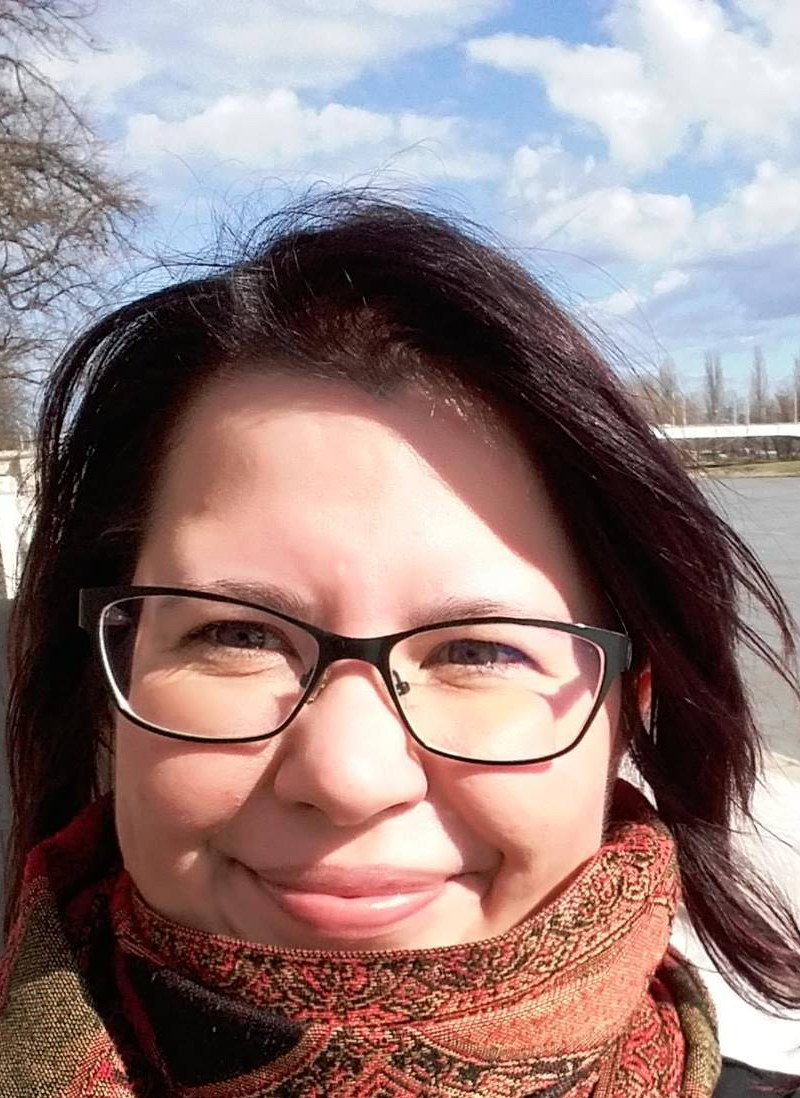
Emma completed her PhD in 2017 at the University of Szeged, Hungary, on the topic of
revealing supermassive black hole binaries via the signatures in the jets of radio-loud
active galactic nuclei. She analyzed decade-long very long baseline interferometric data
of AGN jets and modeled the evolution of the jet structure by hypothesizing an orbiting
supermassive black hole at the base of the jet. After finishing a three years grant
hosted by the Konkoly Observatory (Budapest, Hungary) and remotely already collaborating
with Julia Becker Tjus and Anna Franckowiak, she joined RUB in October 2022 to work on
the multimessenger astronomy of blazars, mainly from the angle of neutrino
(IceCube Neutrino Observatory), gamma-ray (Fermi-LAT) and radio astronomy (various
interferometric and single dish measurements).
Emma started her Humboldt Fellowship with Anna on 1 April, 2023. They carry out s
tacking analysis of IceCube neutrino data to probe a sample of roughly 300 gamma-ray blazars.
Emma is a member of the IceCube Collaboration.
Wenlian Li (visiting student with CSC scholarship in 2025)
I am a visiting PhD student in the MM group at RUB, supported by a CSC scholarship since November 2024.
My PhD, based at the Tsung-Dao Lee Institute, Shanghai Jiao Tong University (SJTU), focuses on multi-messenger
and neutrino astronomy. My thesis investigates neutrino signals from the Cygnus region and the diffuse
Galactic Plane. As a member of the LHAASO and TRIDENT collaborations, I have worked on performance studies
and energy reconstruction optimization for LHAASO-KM2A at large zenith angles. I also contributed to the
TRIDENT Pathfinder experiment in 2021, developing hardware for the light source system.
My journey in multi-messenger astronomy began with my bachelor’s thesis in 2020, where I analyzed HXMT X-ray
data following the neutrino alert IC190730A. I am currently involved in follow-up campaigns with observatories
including FAST (radio), Insight-HXMT (X-ray), and the Lijiang 2.4-meter telescope (optical).
Sven Weimann (PhD student, graduation in 2025)
In October 2020 I started my PhD thesis in the Multi-Messenger Group at the
Ruhr-University. My work is focused on developing the new LAST telescope
together with other astronomers at DESY in Zeuthen and the Weizmann Institute
in Israel and finding optical counterparts of the IceCube neutrino events using
real-time observations of the Zwicky Transient Facility.
Before joining Anna Franckowiak's group, I worked at the Astronomical
Institute of the Ruhr University on photometry of large-scale structures in
galaxies, including the study of the Low Surface Brightness Universe.
In my master thesis I worked on the detection of diffuse dust in the disk-halo
interface of nearby edge-on galaxies.
Jannik Teuchert (Master student)
In 2021, I completed my bachelor's thesis in the Galaxy Evolution Group at
RUB, where I investigated the low-frequency radio emission from
hyper-luminous infrared galaxies (HLIRGs). I joined the Multi-Messenger
Group in June 2024, to begin writing my master's thesis. My work focuses
on studying the neutrino spectrum expected from gamma-ray bursts (GRBs)
within the framework of a proton-synchrotron model using numerical
modeling techniques.
Simon Pick (Master student, now PhD student at DESY Zeuthen)
Simon did his Bachelor thesis in the MM group in 2023, where he investigated
the excess of neutrinos from blazars in the Roma-BZCAT by matching these sources
to point-like neutrino hotspots detected by IceCube in the Southern sky. After spending
the summer 2023 at DESY Zeuthen as a summer student, he started his master thesis in group
to work on characterizing the mDOM sensor for IceCube-Gen2. He will spend several months
at DESY to perform measurements in the lab.
Yannik Pospiech (Master student)
Yannik did his Bachelor thesis in the MM group in 2023, where he studied the connection between
supernovae and magnetars, to learn about their emission processes with the goal to probe them as
neutrino emitters. In his master thesis he is working on possible neutrino emission of SLSNe
and FBOTs. In that context he creates a catalog of theses sources and uses different powering
mechanisms to check their possibilities to be high-energy neutrino candidate sources.
Jannis Necker (PhD Student), based at DESY, graduation in 2025, now a postdoc in Leiden
Jannis did his Bachelor thesis in the cosmology group at Humboldt University. Then he spend a year studying in Madrid. He joined that group
as a master student and worked on an algorithm to estimate the explosion time of
core-collapse supernovae in order to define a search window for high-energy neutrinos. In addition he compares
different neutrino stacking codes.
In November 2020 Jannis started his PhD in the multi-messenger group as a member
of the Helmholtz-Weizmann research school. He expands his work on core-collapse supernovae
light curves.
Lotte-Malin Lamotte (Bachelor student), graduation in 2024
Lotte studies at RUB. After a year abroad at University of York, she joined the MM group
for her Bachelor thesis. She works on the calibration of the four LAST telescopes equipped
with polarization filters.
Simeon Reusch (PhD Student, based at DESY), graduation in 2024, now in data science
I am a PhD student at DESY since October 2019. In my master thesis at
Humboldt-University Berlin I discovered a time-dependent bias in the
calibration pipeline of the Zwicky Transient Facility (ZTF). As part of the
Helmholtz-Weizmann International School on Multimessenger Astronomy, I am
mainly concerned with optical follow-up to high-energy neutrinos detected
by IceCube.
We have already discovered two exciting potential counterparts
to these - a TDE (see Robert) and a quite mysterious flare in a
Narrow-Line Seyfert Galaxy – stay tuned! I am also focusing on the
integration of neutrino and optical candidate correlation schemes
into the AMPEL framework, have developed a forced photometry framework
for quick retrieval via Slack and work on the ZTF Supernova Ia Sample with
the Cosmology Group at Humboldt.
Cristina Lagunas Gualda (PhD Student based at DESY), graduation in 2024, now postdoc at TUM
I started my PhD at DESY in November 2019. I did both my Bachelor's and my
Master's degree at the University of Valencia.
I completed my master thesis in "Instituto de Física
Corpuscular", where I worked with ANTARES on dark matter
searches. Now I will focus on point source detection during my PhD with IceCube.
Dr. Massimiliano Lincetto (Postdoc), based at RUB 2020-2023, now postdoc at University of Würzburg / DESY Zeuthen
After my master at the University of Padua, I pursued my PhD at the CPPM of Marseille
as part of the KM3NeT Collaboration. My thesis has been centred on the capability
of detecting low-energy neutrinos from a future nearby core-collapse supernova
with the KM3NeT detectors. In this time I had the chance to discover the world
of neutrino telescopes and get in touch with the community of multi-messenger
astronomy. I have been involved in the birth of the SNEWS2.0 Collaboration, aimed to
build the next generation supernova early warning system based on the coincident
detections of neutrinos around the globe.
As of January 2021, I entered the Multi-Messenger Group as a postdoc
at the Ruhr-Universität Bochum, aiming to explore the high-energy neutrino
frontier. Here, I have joined the efforts to discover astrophysical sources
with the IceCube Neutrino Observatory, exploiting the potential of
multi-messenger observations.
Dr. Vandad Fallah Ramazani (Postdoc), based at RUB 2020-2023, now postdoc at Metsähovi observatory, Finland
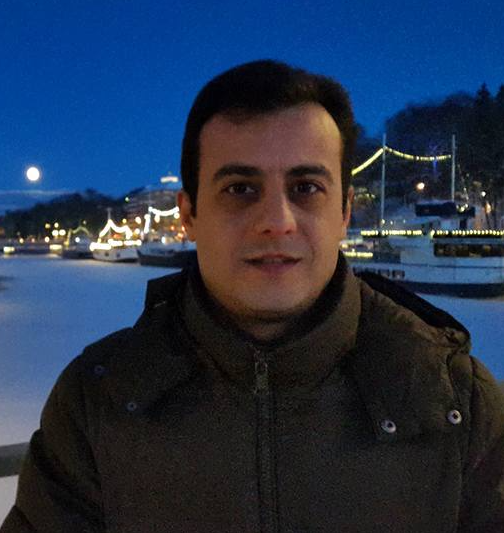
After having 7 years of professional experience in industries as a mechanical engineer,
I started my desired field of interest by undertaking a master's and then Ph.D.
degree program in physics and astronomy at Tuorla Observatory, Turku, Finland.
During my Ph.D. within the MAGIC Collaboration, I worked on BL Lac objects. BL Lac
objects are the most numerous extragalactic sources to be detected at very high
energy (VHE, >100 GeV) gamma rays and are a sub-class of blazar-type active galactic
nuclei, with their relativistic jet points very close to our line of sight.
Starting in February 2020 I am acting as the multi-wavelength/multi-messenger
deputy coordinator of MAGIC collaboration and since January 2021, I joined the
team of astrophysicists at the Ruhr-Universität Bochum (RUB) as a postdoctoral
fellow. At RUB, we are building and testing a cost-efficient optical telescope
with polarization capability using a state-of-art approach. Once the design is
approved it will be used as part of the Large Array Survey Telescope (LAST) or
the optical support telescope of the future generation of imaging air Cherenkov
telescopes.
I'm a member of the MAGIC, Fermi-LAT, and Large Array Survey Telescope (LAST)
collaborations.
Dr. Simone Garrappa (former PhD Student at DESY and postdoc based at RUB, now postdoc at Weizmann Instutite in Israel)
Simone started his PhD at DESY in January 2018. He did his master thesis
at University of Bari working on photon identification
in the Dark Matter Particle Explorer (DAMPE) with machine learning algorithms.
During his PhD at DESY he worked with Fermi data to look for
gamma-ray counterparts of high-energy neutrinos detected by IceCube. Now he is
leading the Fermi-LAT flare advocate activities and got involved in optical polarization
measurements with LAST.
Dr. Xavier Rodrigues (Postdoc, based at RUB 2021-2023), now postdoc at ESO
I'm a postdoc currently interested in the numerical modeling of high-energy phenomena that take place in the most
powerful objects in the Universe, such as active black holes and gamma-ray bursts. I did my PhD at DESY, where I studied
Active Galactic Nuclei, or AGNs, as potential sources of neutrinos and cosmic rays.
I joined the Multi-Messenger group in
October 2019, and I am currently working on identifying the sources of the astrophysical neutrinos observed by IceCube, whose
origin is not yet understood. For that I develop astrophysical simulations involving high-performance numerical algorithms and
machine learning, and I work closely with my experimental IceCube colleagues in understanding the analysis of the observational data.
Maurice Weigelt (Master student, based at RUB, graduation in 2024)
I got my Bachelor’s degree at the Astronomical Institute of RUB In 2021.
I analysed stellar tidal streams of
nearby spiral galaxies with deep photometry of amateur telescope images.
Since June 2023, I work on my master thesis in the Multi-Messenger Group at RUB
and study the feasibility of future Kilonova detection with the upcoming UV
telescope ULTRASAT.
Nisa Eyilmez (Bachelor student, based at RUB, graduation in 2024)
As a bachelor student at RUB, I am currently writing my bachelor thesis in 2024.
In the thesis, I evaluate different methods of angular uncertainty estimation, by analyzing simulated
IceCube neutrino track events.
Julia Baßier (Bachelor student, based at RUB, graduation in 2024)
I am a Bachelor's student at RUB, and my favorite subjects are astrophysics and anything
math-related. Currently, I am working on my Bachelor's thesis in cooperation with the
Institute of Stochastics since September. The thesis focuses on the stability of cross-correlation
of multi-wavelength blazar light curves depending on the data quality.
Tianyu Zhao (Bachelor student, based at RUB, graduation in 2023)
Tianyu is a Bachelor student at RUB. He employs IceCube neutrino alert data and cosmological information to
estimate the number of transients potentially associated with IceCube neutrinos.
Andreas Willeke (Bachelor student, based at RUB, graduation in 2022)
I studied mechanical engineering at RUB and received my degree
Dipl.-Ing. in 1984. After working in the energy business for more than
three decades, I decided to learn more about modern physics and
returned to RUB as a student. During my studies I focused on astronomy
and particle physics.
I work with Massimiliano on a search for high-energy neutrinos with IceCube from the direction of the peculiar
supernova iPTF14hls.
Robert Stein (PhD Student from 2017 to 2021 - now postdoc at Caltech)
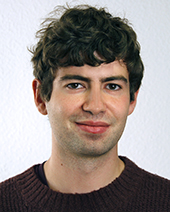
Since July 2017 I've been a PhD student at DESY. I'm originally from London,
and did my undergraduate studies at Imperial College. I completed my masters
project, as part of an Erasmus Exchange, in the Astroparticle Physics group
of the University of Hamburg. The thesis topic was Reconstruction of Heavy
Cosmic rays using Cherenkov Light, giving me a background in Cherenkov
Telescopes and Cosmic Rays. But I've now moved into the exciting field of
high-energy neutrino physics and multi-messenger astronomy.
My research specialism is Tidal Disruption Events (TDEs), which can occur
when a star passes close to a Super Massive Black Hole. If the Star passes
between the tidal radius and the event horizon of the Black Hole, the star
is torn into two halves. One half is accreted by the black hole, while the
other half is ejected. The entire process can be highly luminous, allowing
us to detect it on Earth. Though we have not observed many TDEs (so far less
than 100 have been discovered), the ones we have found are extremely energetic.
Though the physics mechanisms are not well understood, they are likely to be
strong particle accelerators. This makes them an interesting potential
candidate for the source of high energy neutrinos that we detect on Earth.
My analysis is based on a multi-messenger approach, trying to correlate
neutrinos from IceCube to TDE sources detected with telescopes (such as
ASAS-SN or ZTF).
Dr. Vaidehi Paliya (Postdoc from 2018-2020, now assistent professor at IUCAA in India)
Vaidehi started as a postdoc in the group in November 2018. He did his PhD at the Indian Institute for Astrophysics and continued
his career as a postdoc at Clemson University. He is an expert on blazar jets and worked with X-ray and gamma-ray data.
He was the coordinator of the Fermi-LAT AGN working group.
Dr. Shan Gao (Postdoc from 2020-2021), now in data science
Shan did his PhD at Penn State University, where he modelled GRBs under supervison
of Peter Meszaros. He participated in the foundations of the Astrophysical
Multi-messenger Observatory Network (AMON). In 2014 he moved to a postdoc position
in the theory group at DESY, where he developed the state-of-the-art lepto-hadronic
modeling code AM3. The code was successfully applied to model the spectral energy
distribution of the blazar TXS 0506+056.
Shan works on the code optimization, developing interface to couple the code
with other simulation software and using big simulation data and machine learning
technology to search for promising neutrino source candidates.
Dr. Ludwig Rauch (Postdoc from 2017-2019), now in data science
I am a postdoc at DESY since August 2017 working on multi-messenger astronomy
combining ZTF and IceCube data. During my PhD at the Max-Planck-Institut
für Kernphysik in Heidelberg I was a member of the XENON collaboration which tries
to directly detect dark matter with liquid xenon dual-phase time projection
chambers. My work included the analysis of the combined science data of XENON100 to constrain the WIMP model
as well as the construction and performance tests of the photomultiplier arrays of next generation experiment
XENON1T.
At DESY I am working on a novel transient pipeline for ZTF allowing for
data processing and event selection, designed to be automated and
adaptive to manage the large number of expected transient detections.
The pipeline will enable multiple analyses starting from target of
opportunity observations for multi-messenger astronomy to a magnitude
limited and complete transient catalogue.
Richard Naab (Master Student, now PhD student at DESY in the neutrino astronomy group, working with Dr. Markus Ackermann)
My name is Richard, and I am a physics student at Humboldt University. I did my Bachelor's degree in Heidelberg and spent one year in
Grenoble with the Erasmus program.
At the LPSC in Grenoble, I got in touch with high-energy physics at the LHC and did my Bachelor's project on the
prospects of searching for Dark Matter with the ATLAS detector.
Ulas Oeren (Master Student, now software developer in Istanbul)
Ulas works with Fermi-LAT data. Starting from photons at energies above 100 GeV he looks for not catalogued sources and studies their multi-wavelength behavior.
The data is then fit with a leptonic model.
